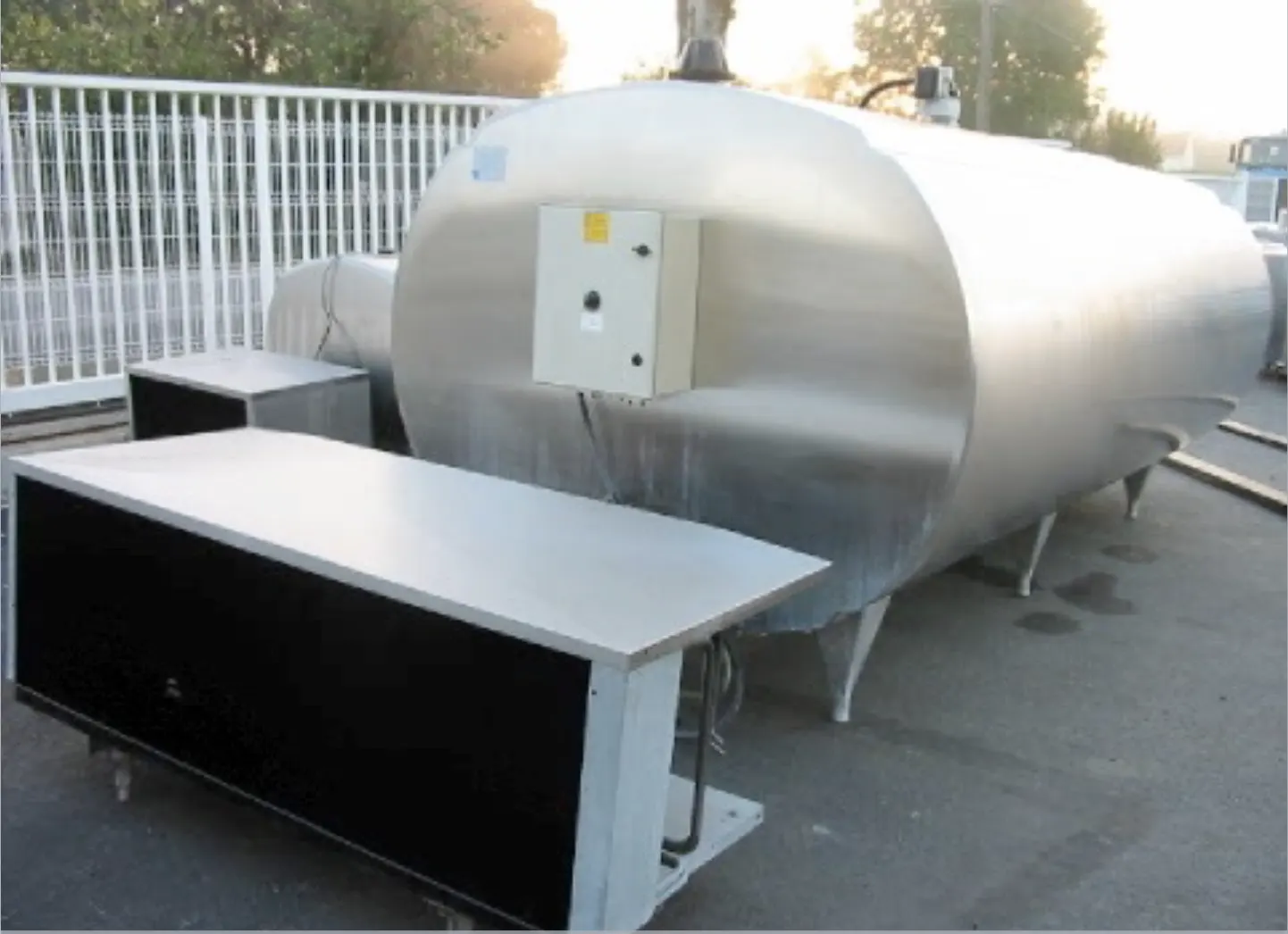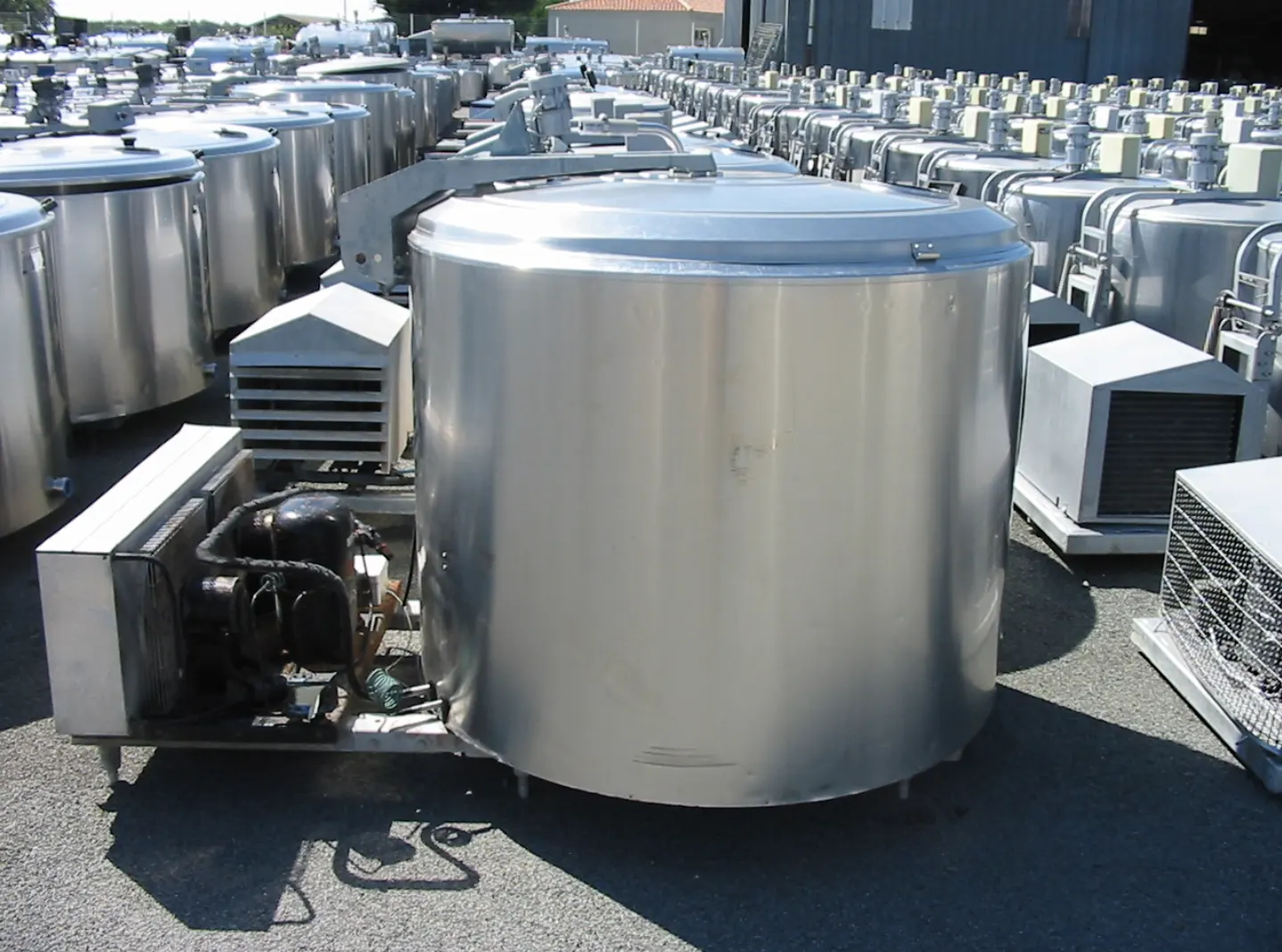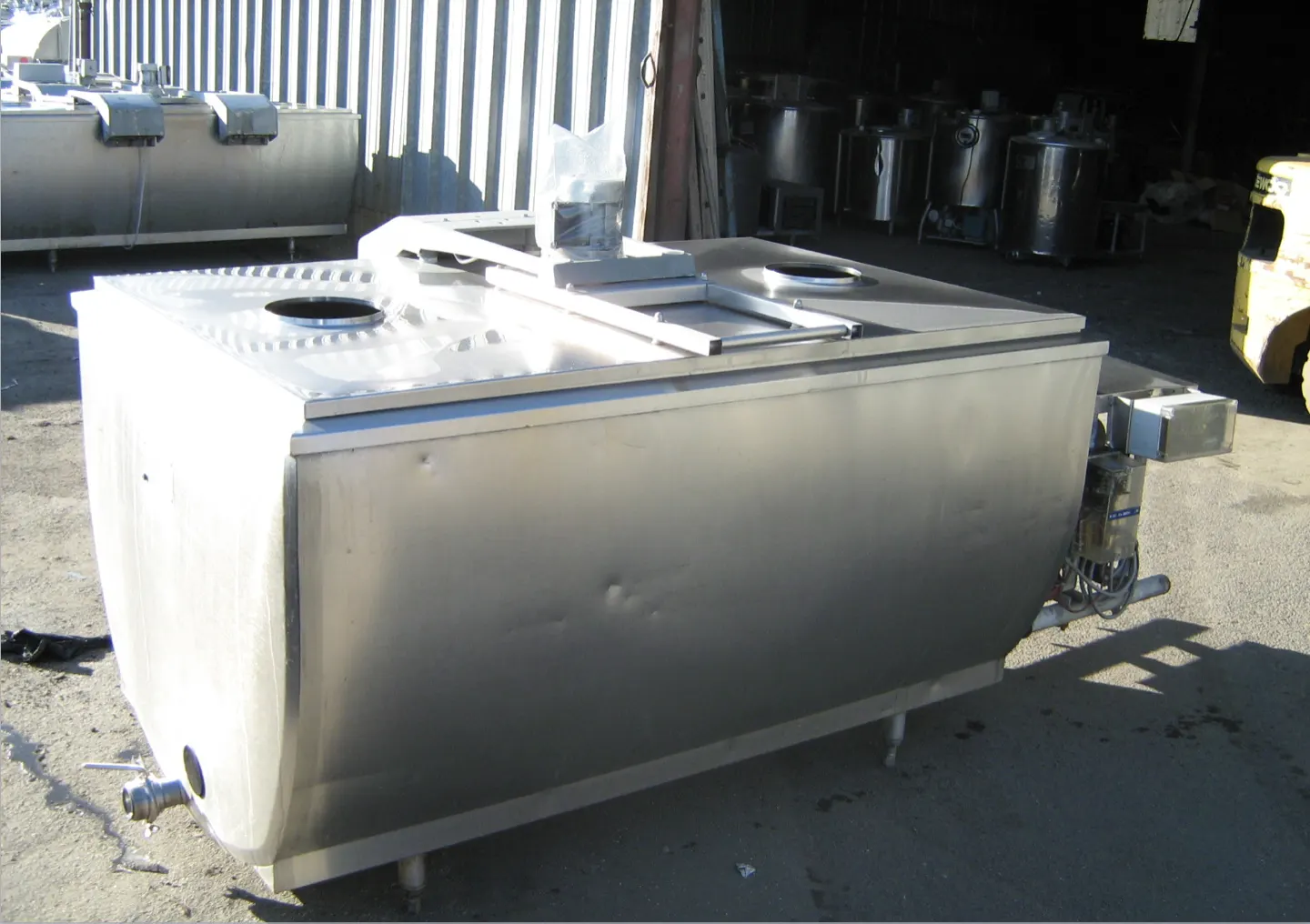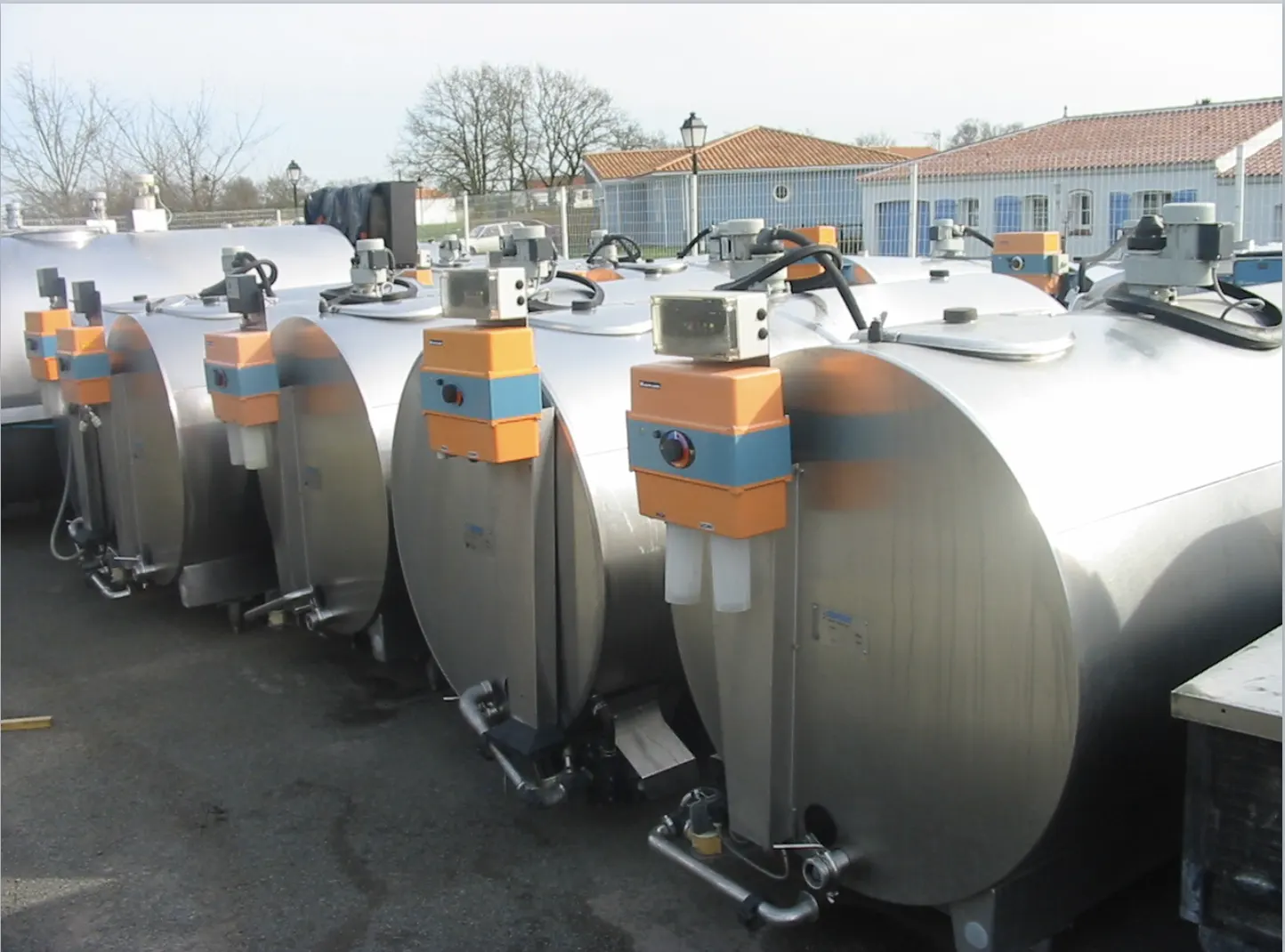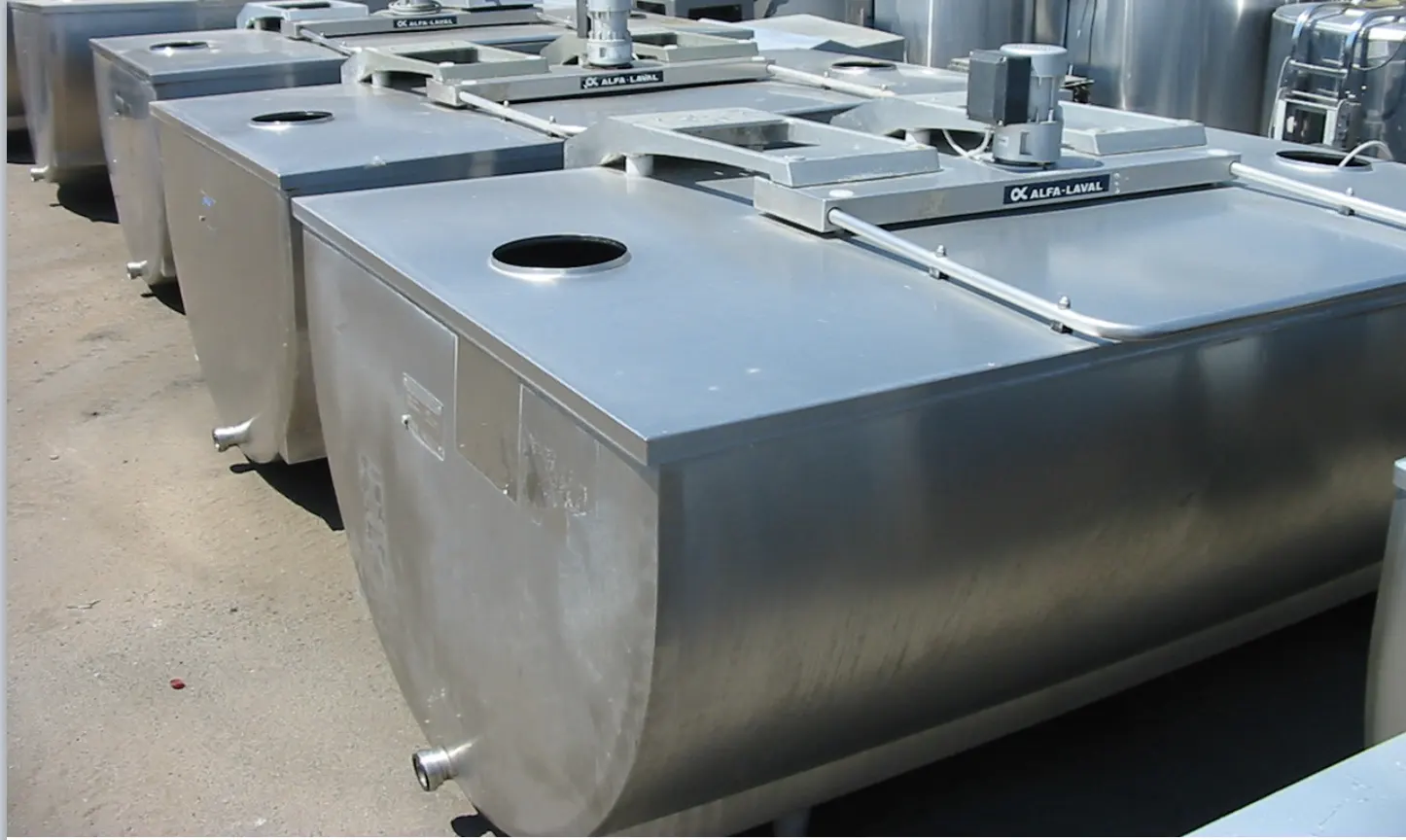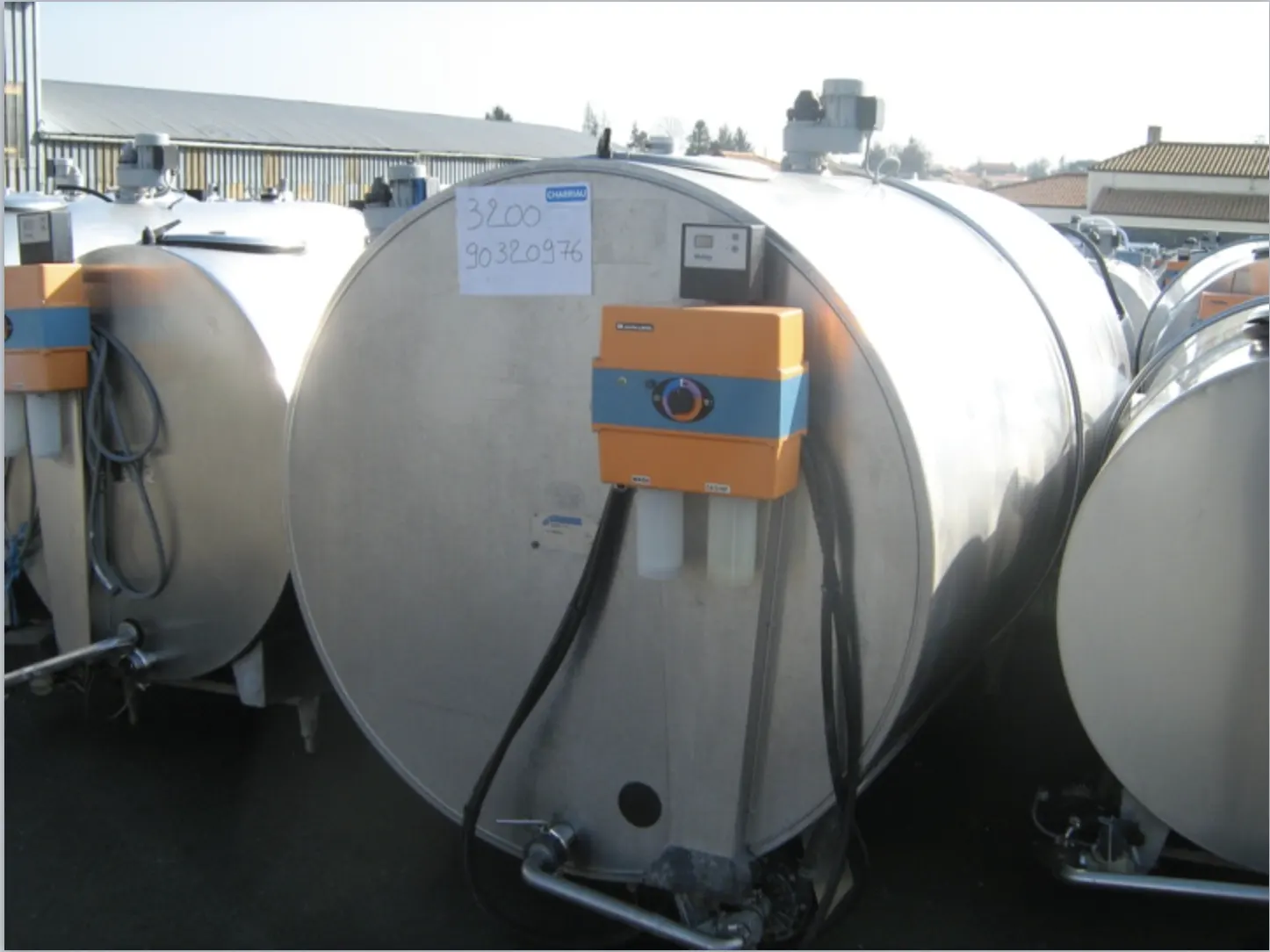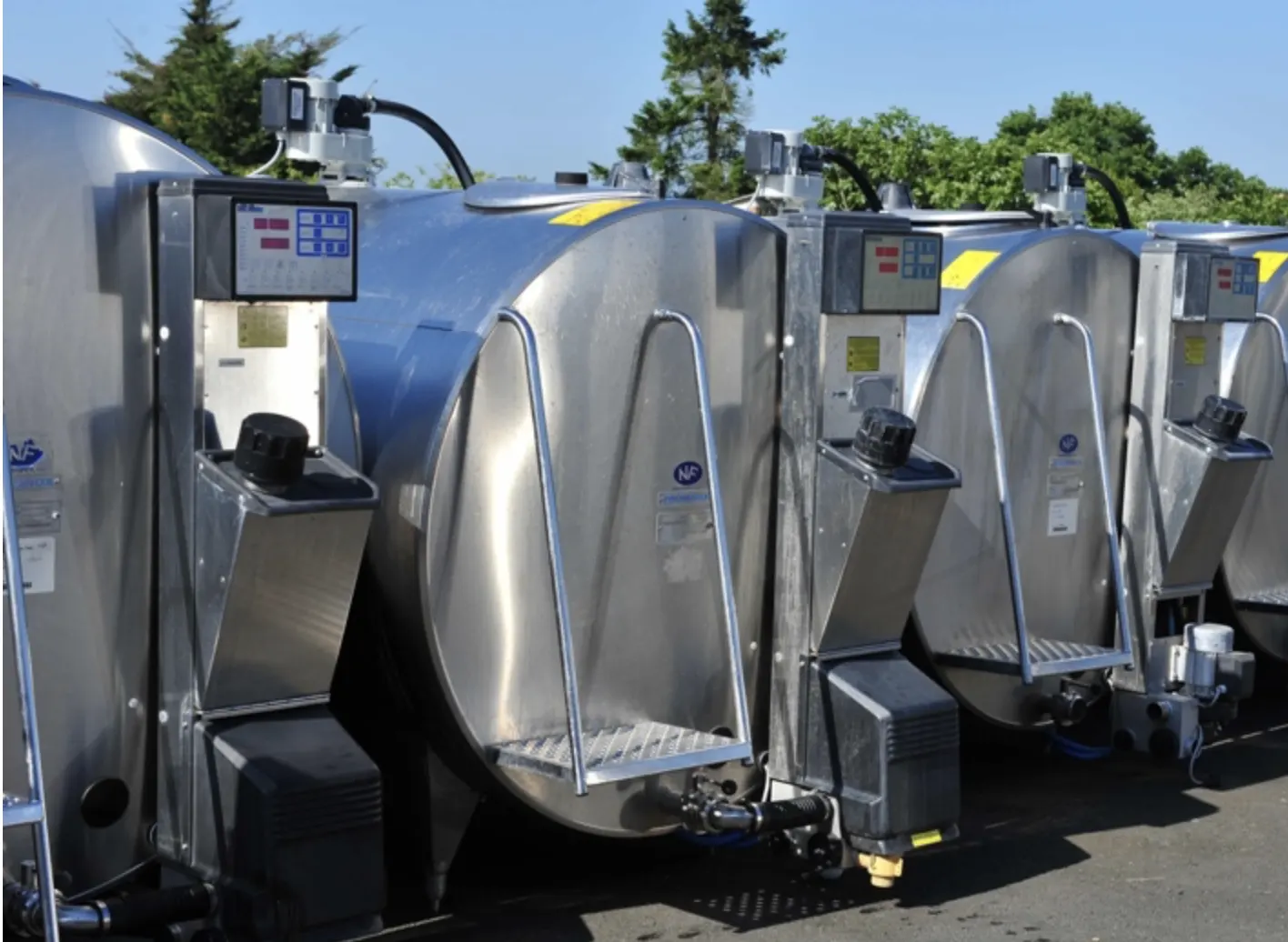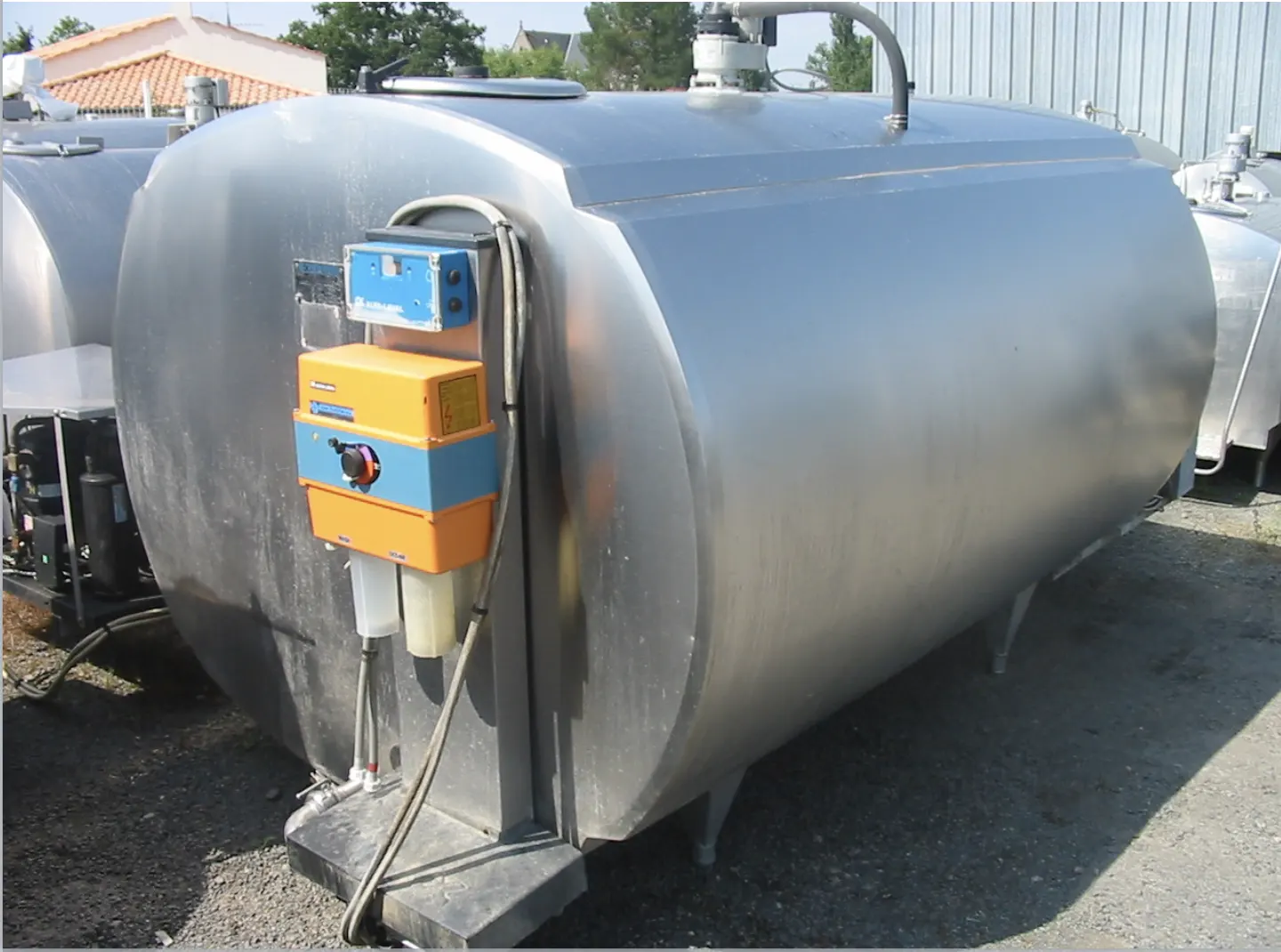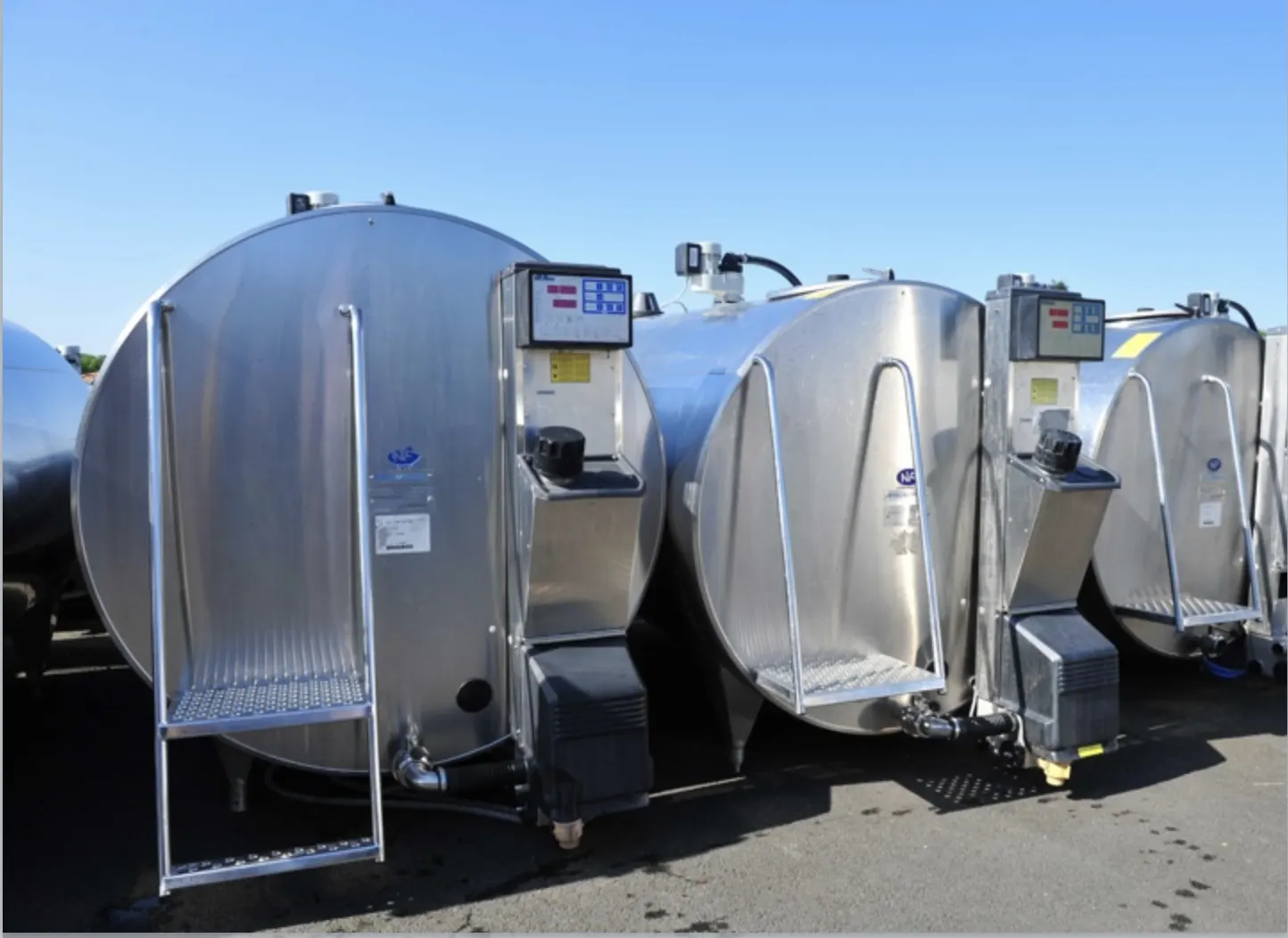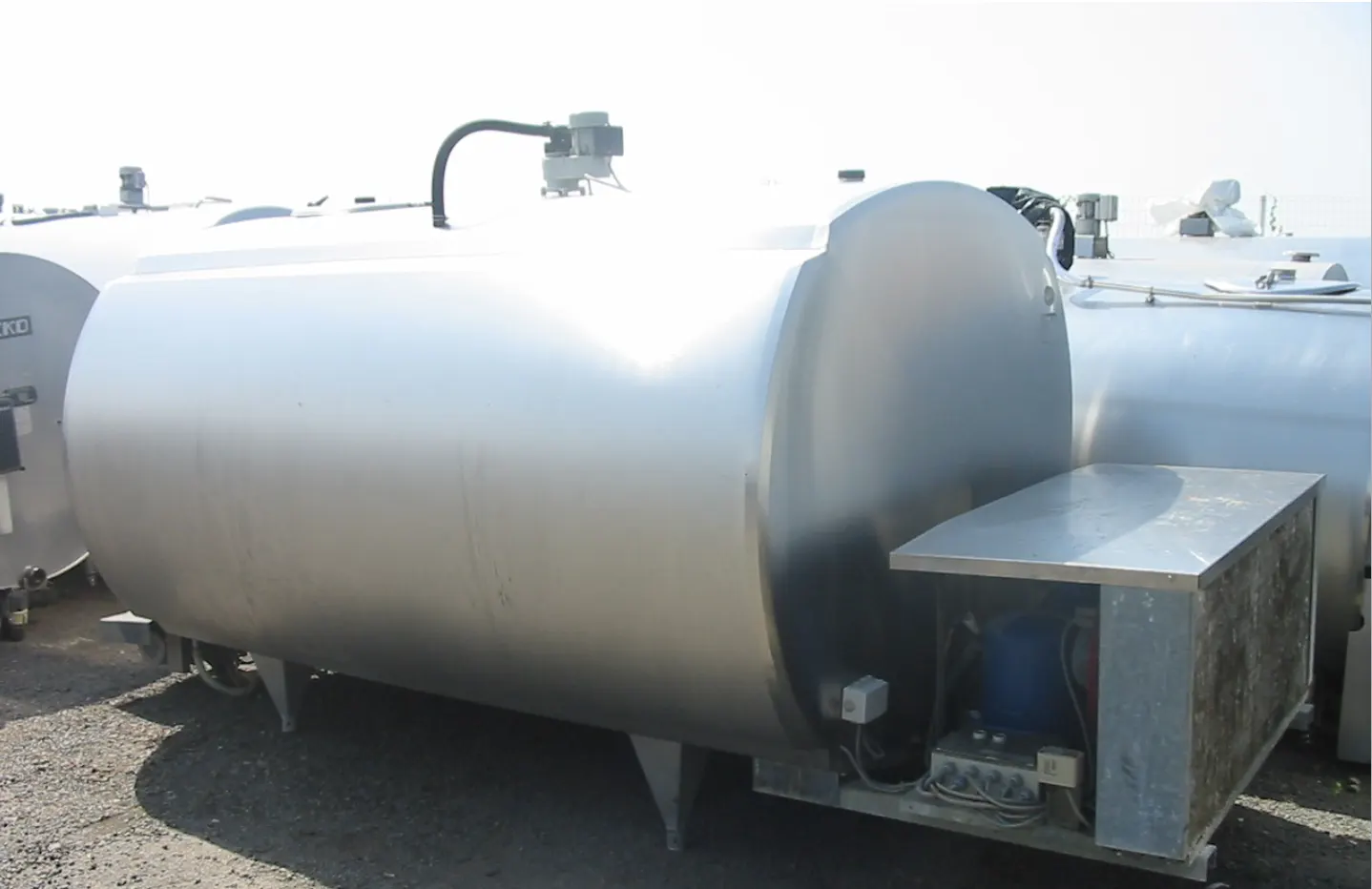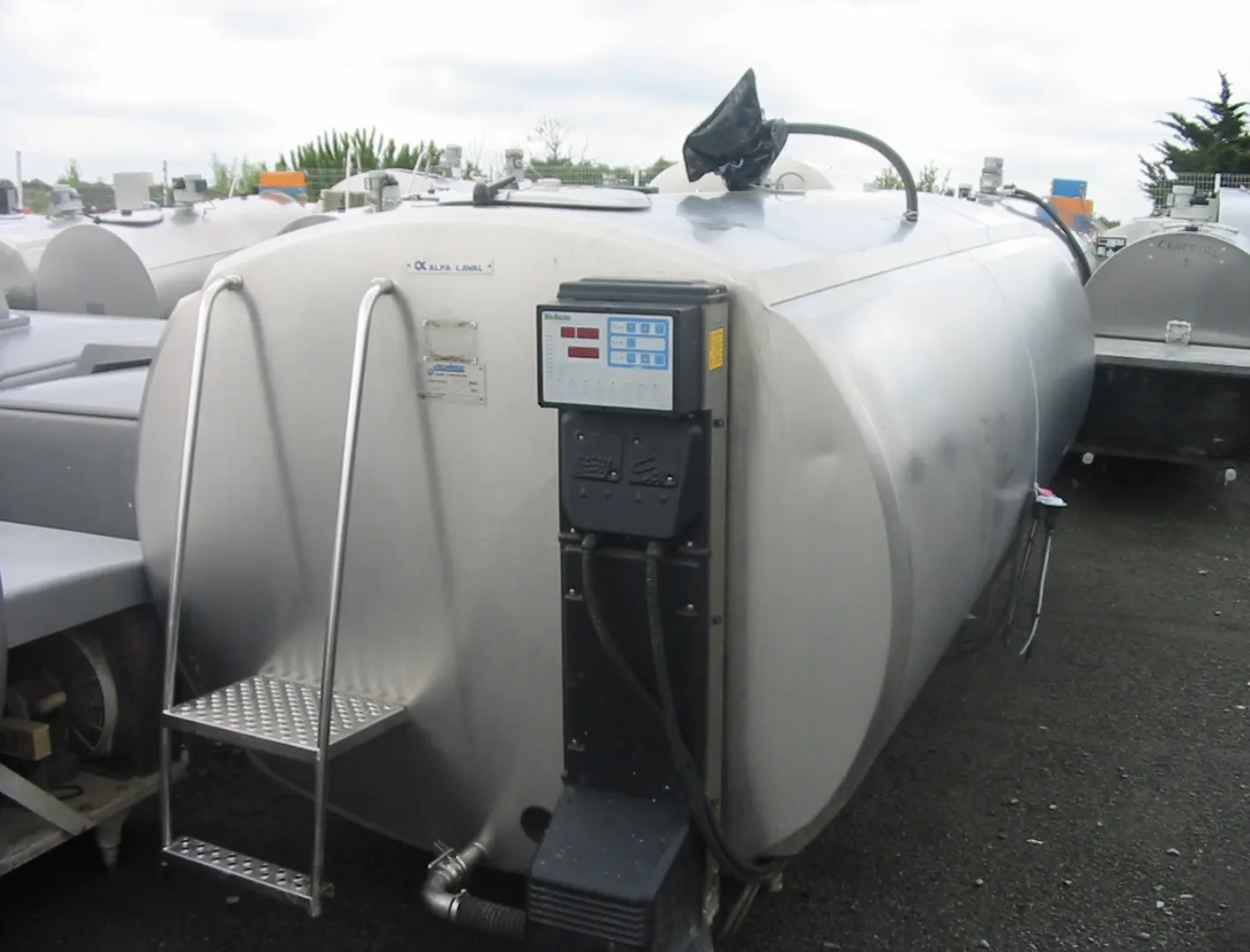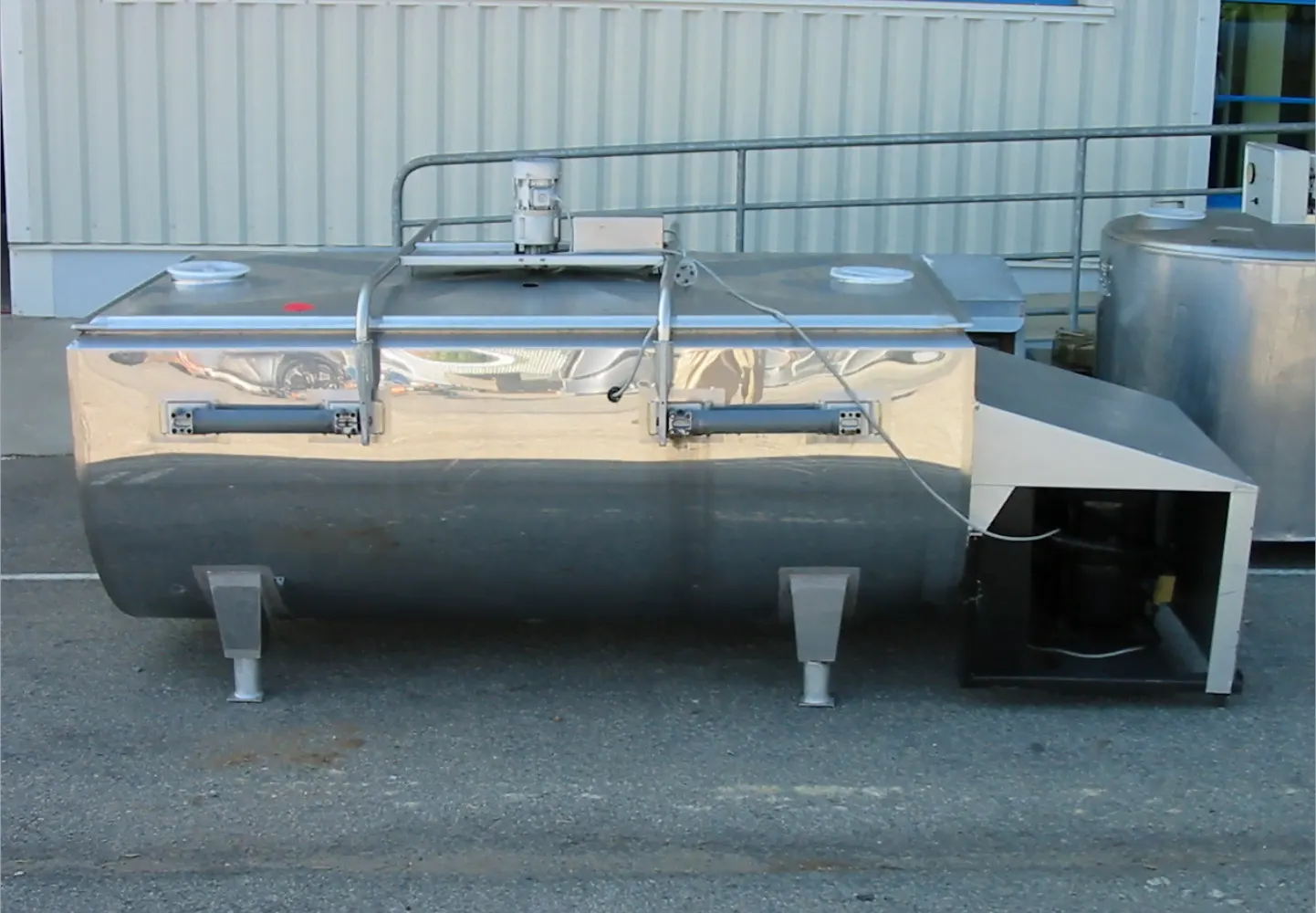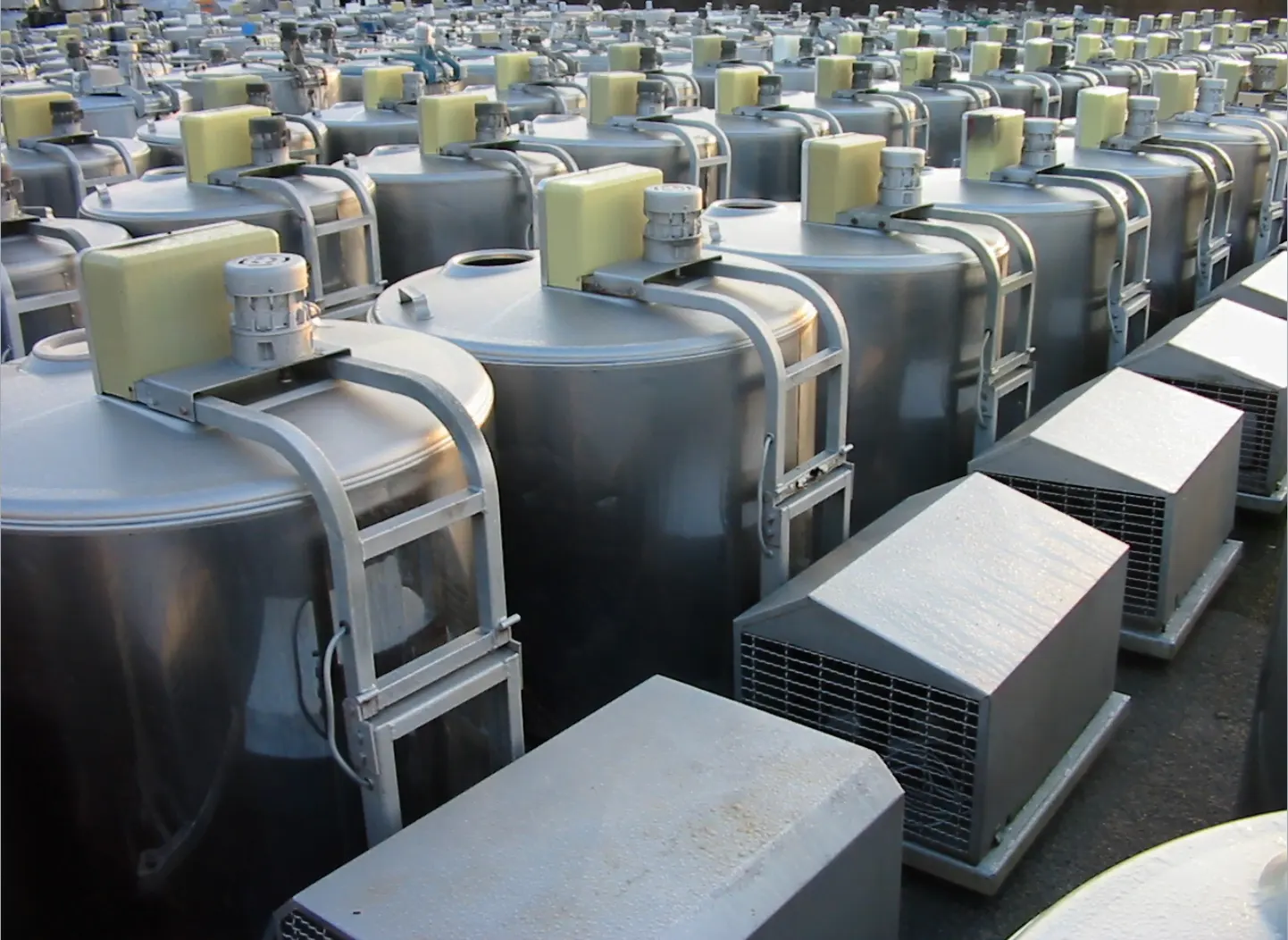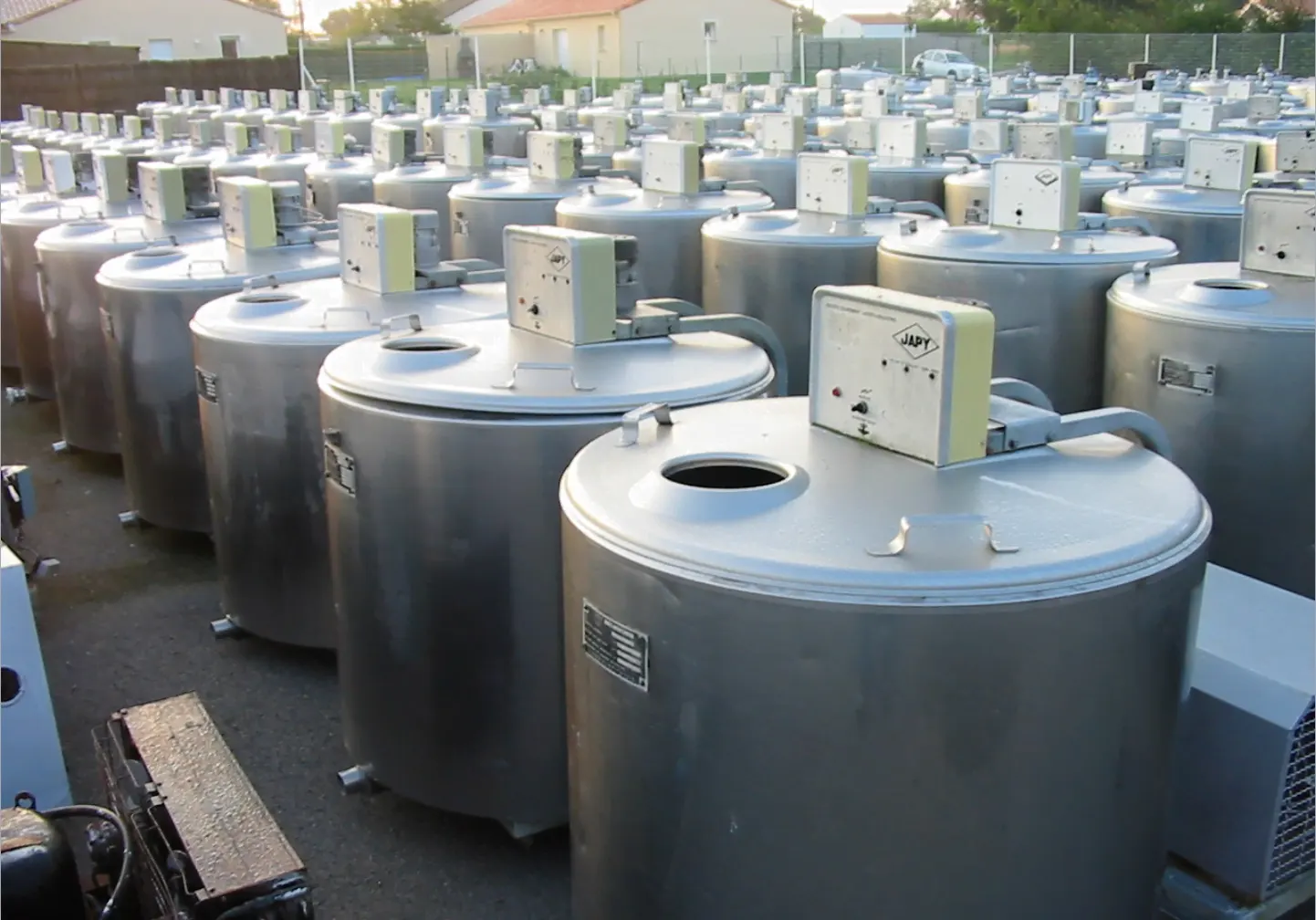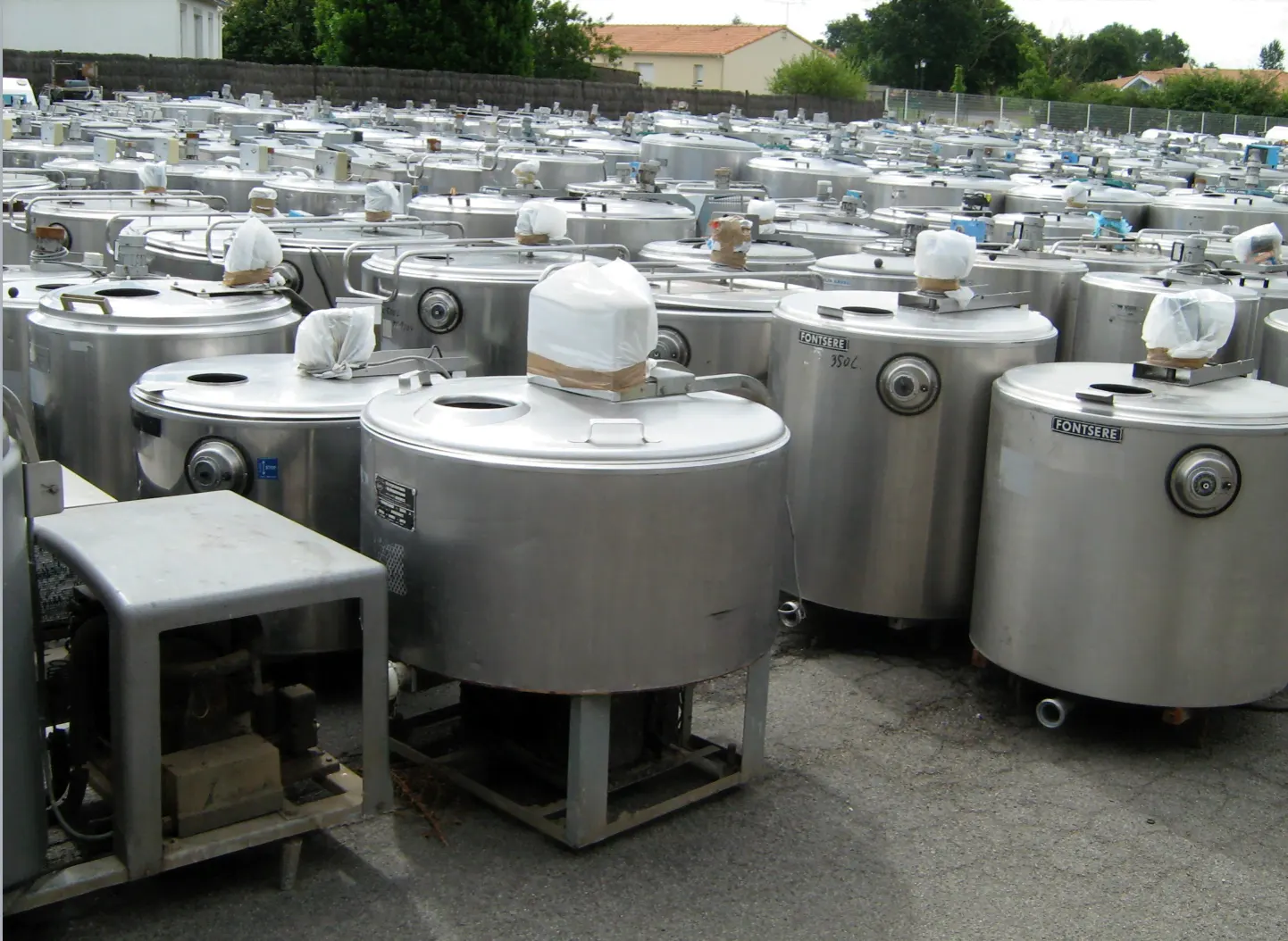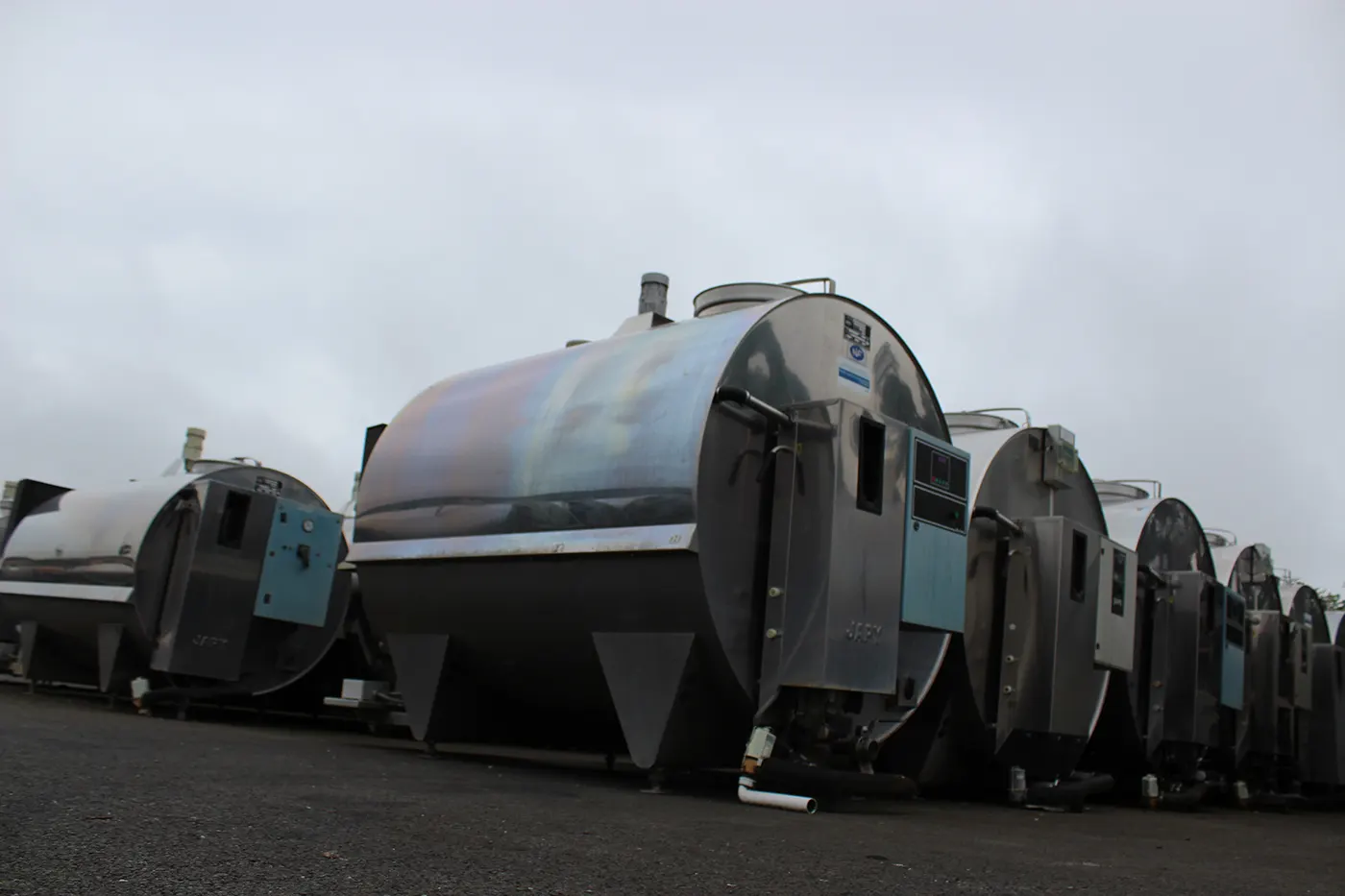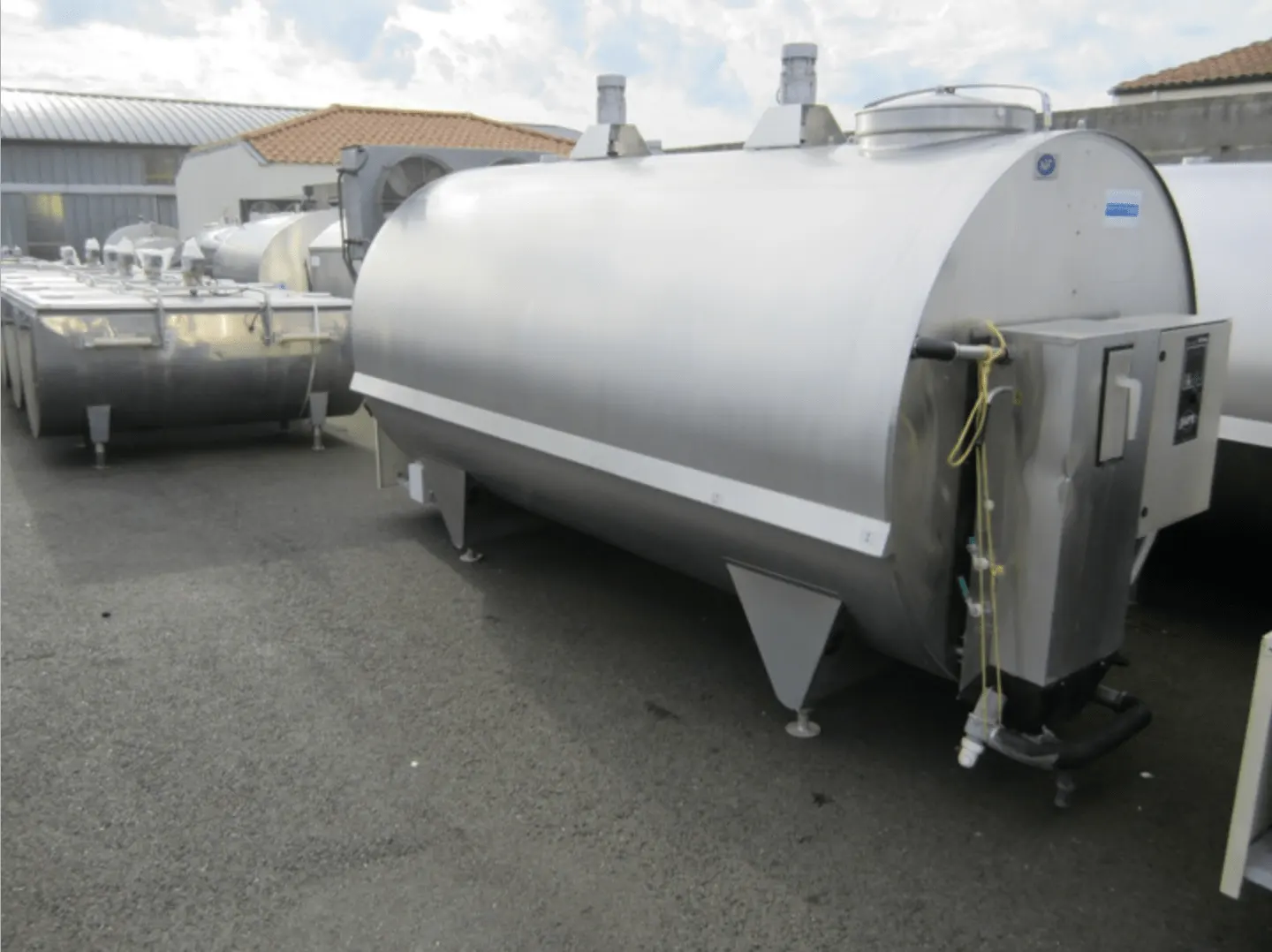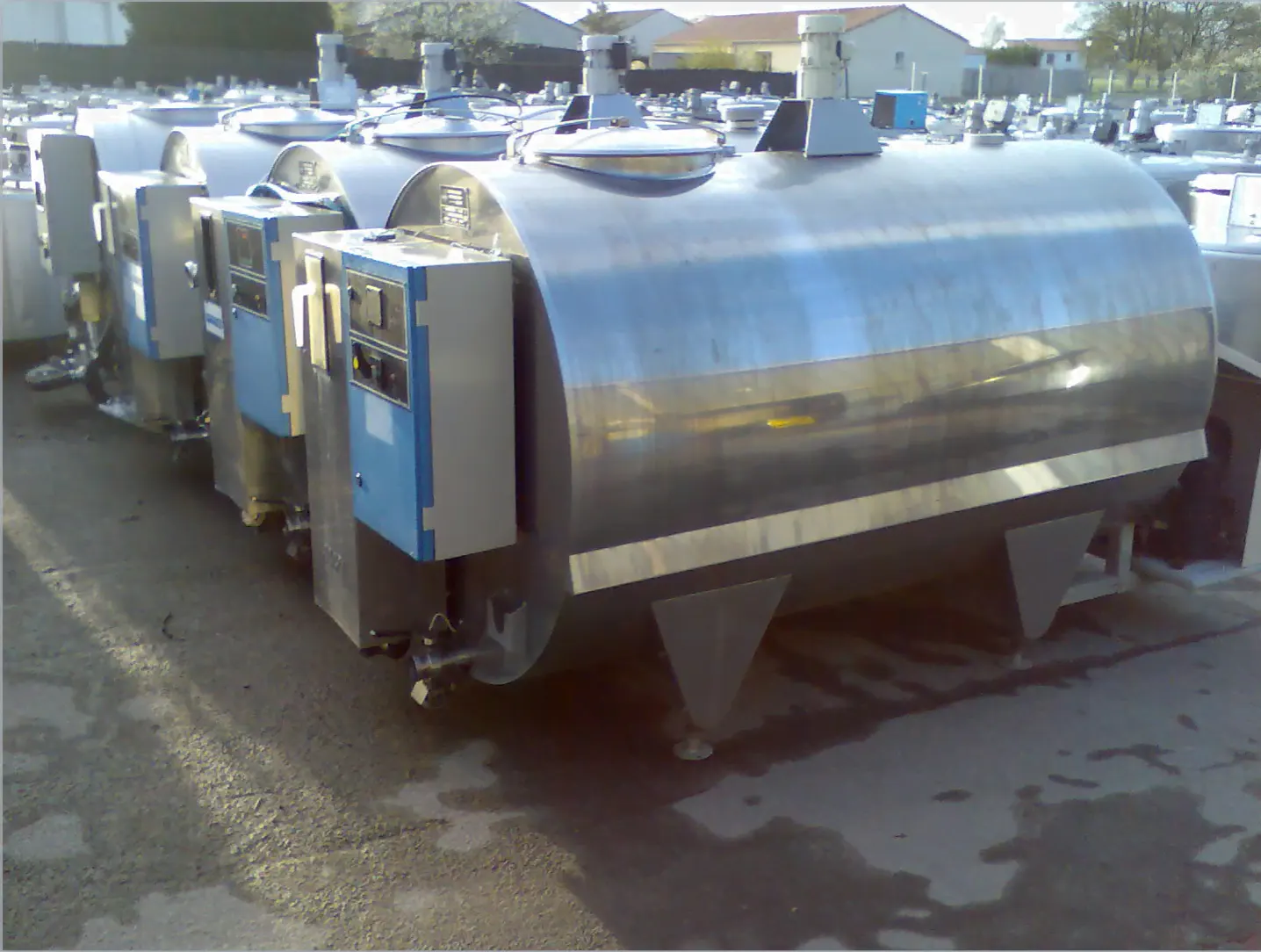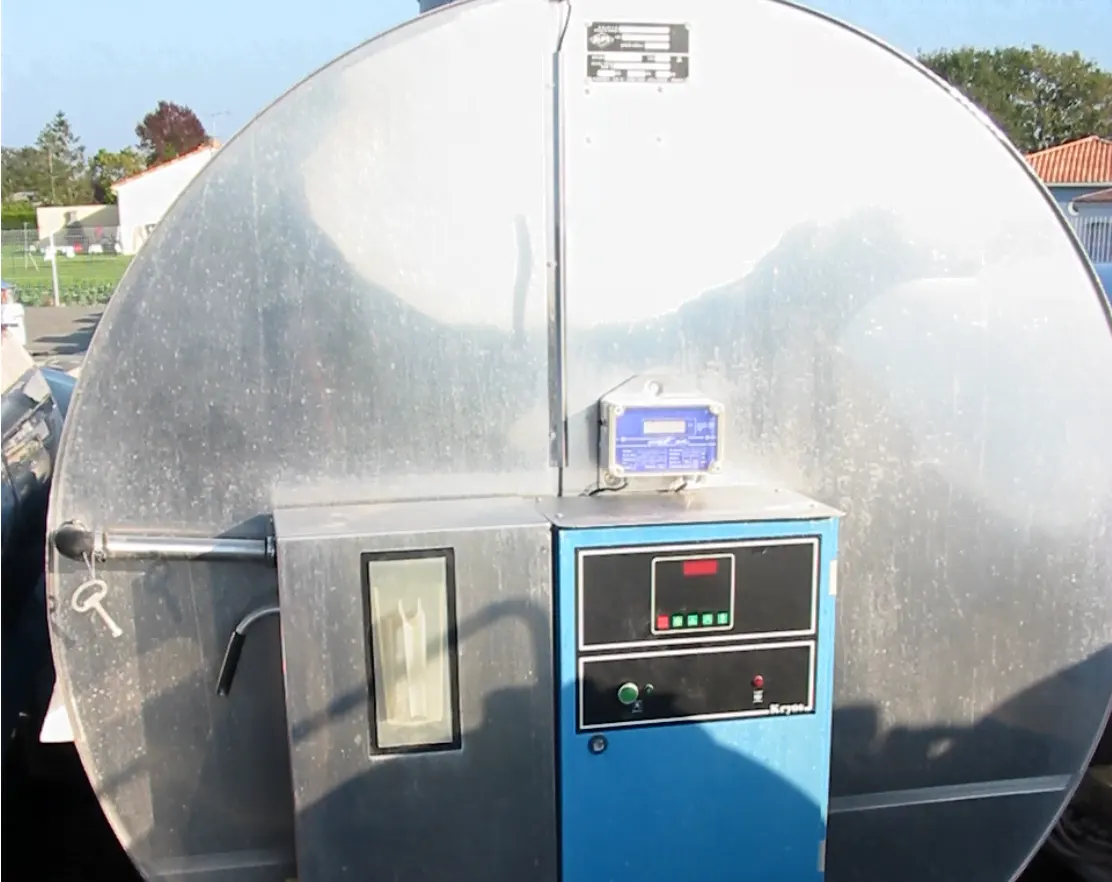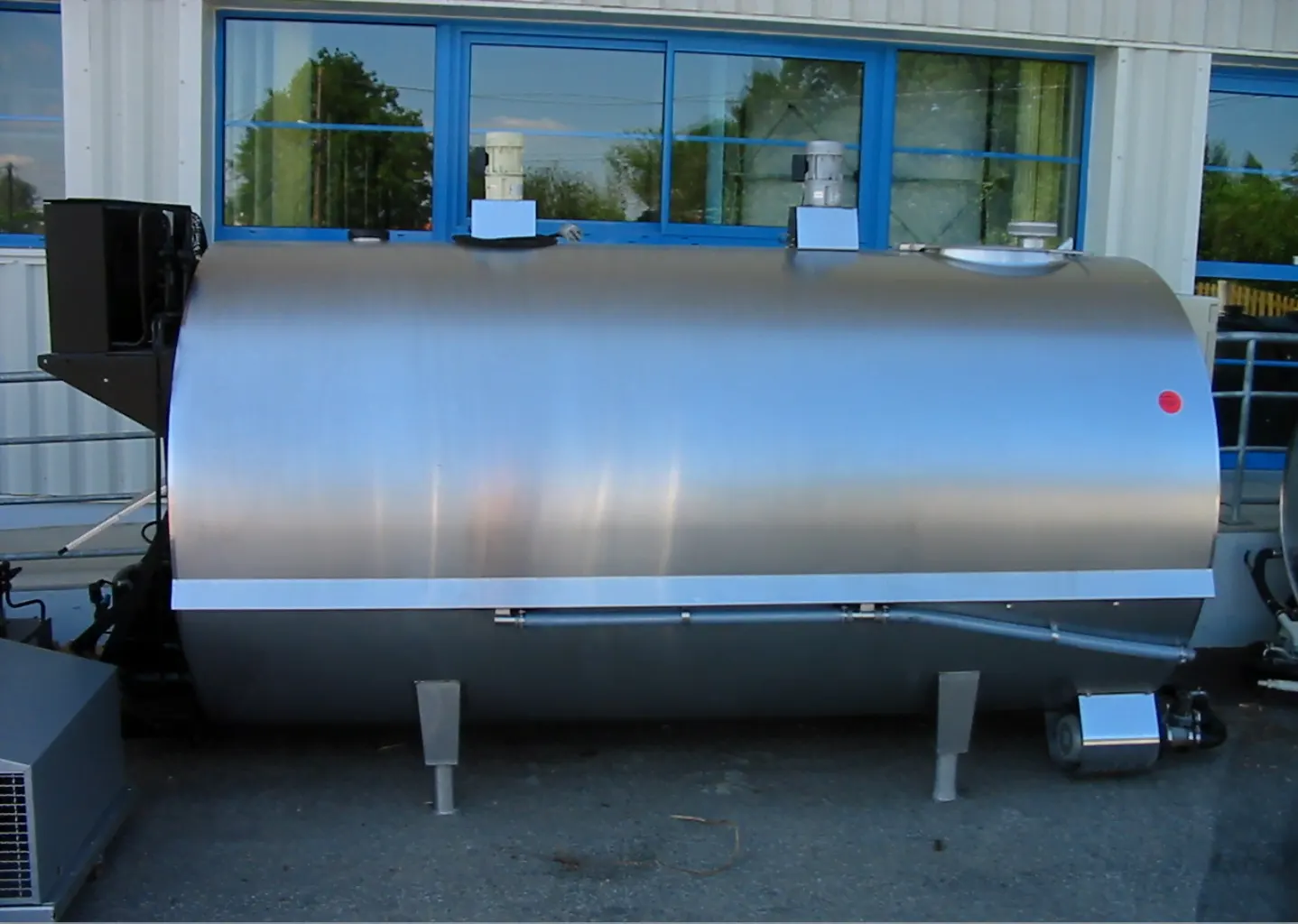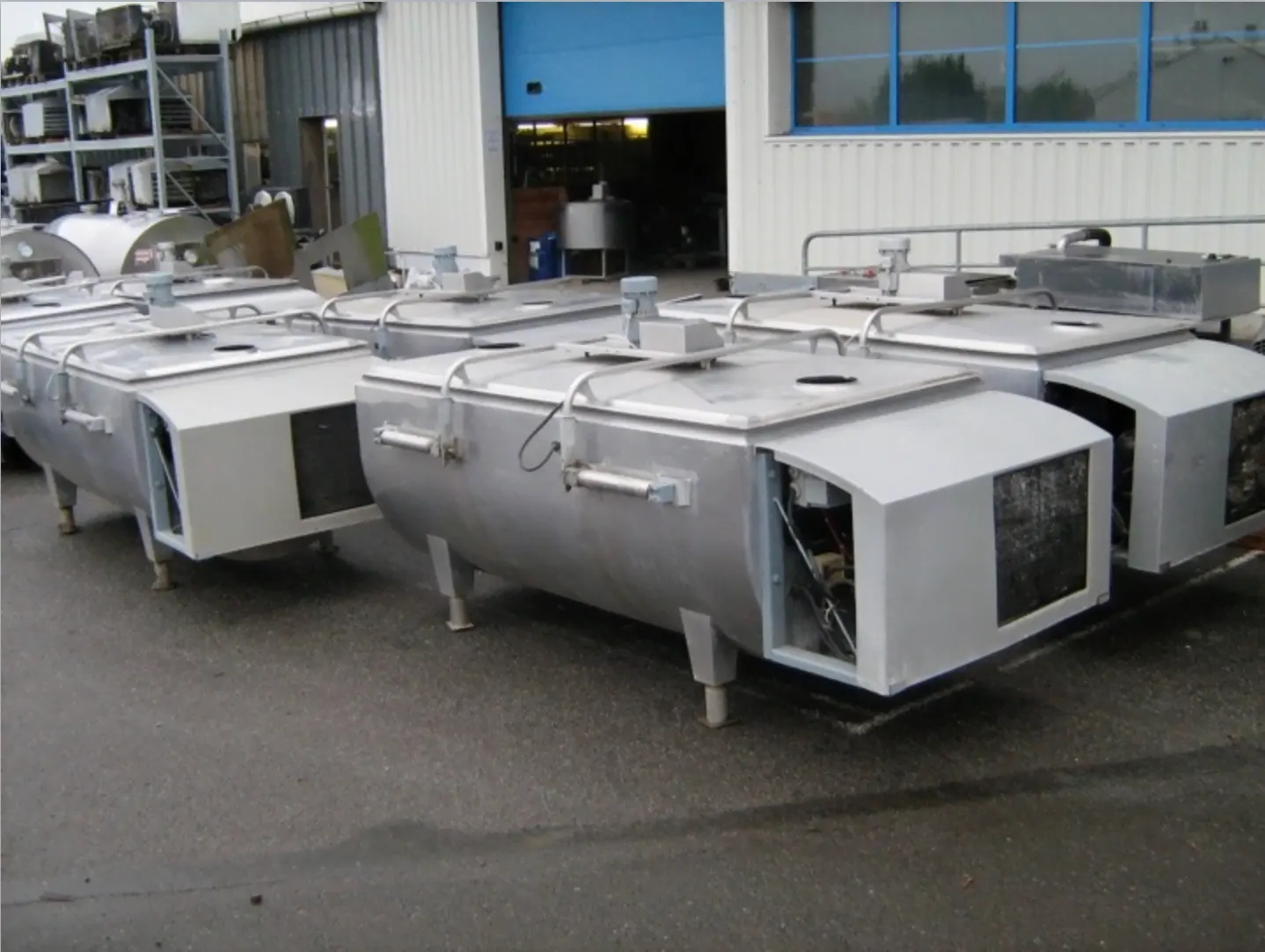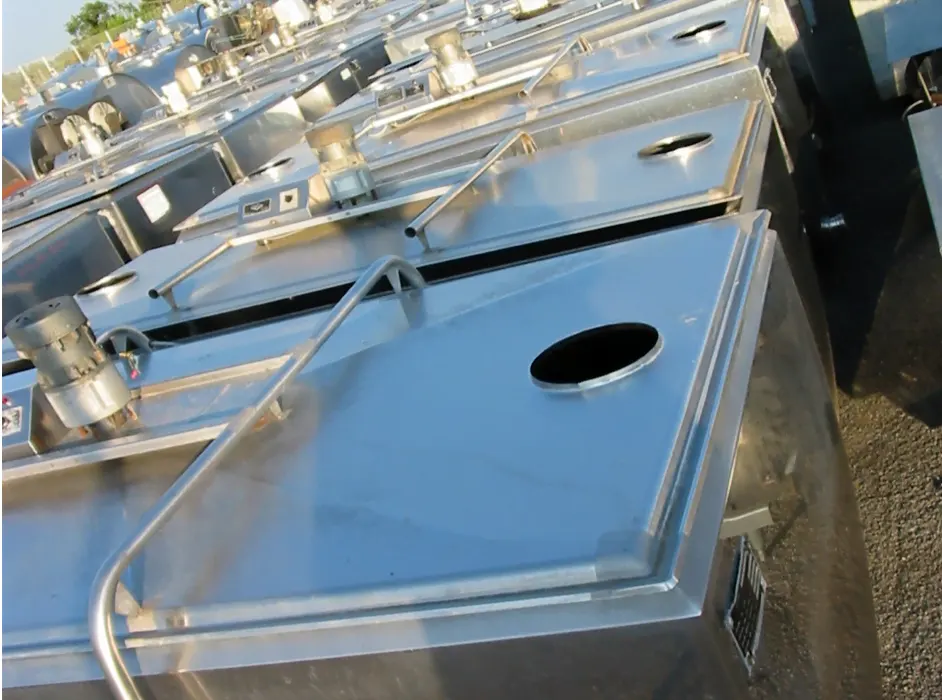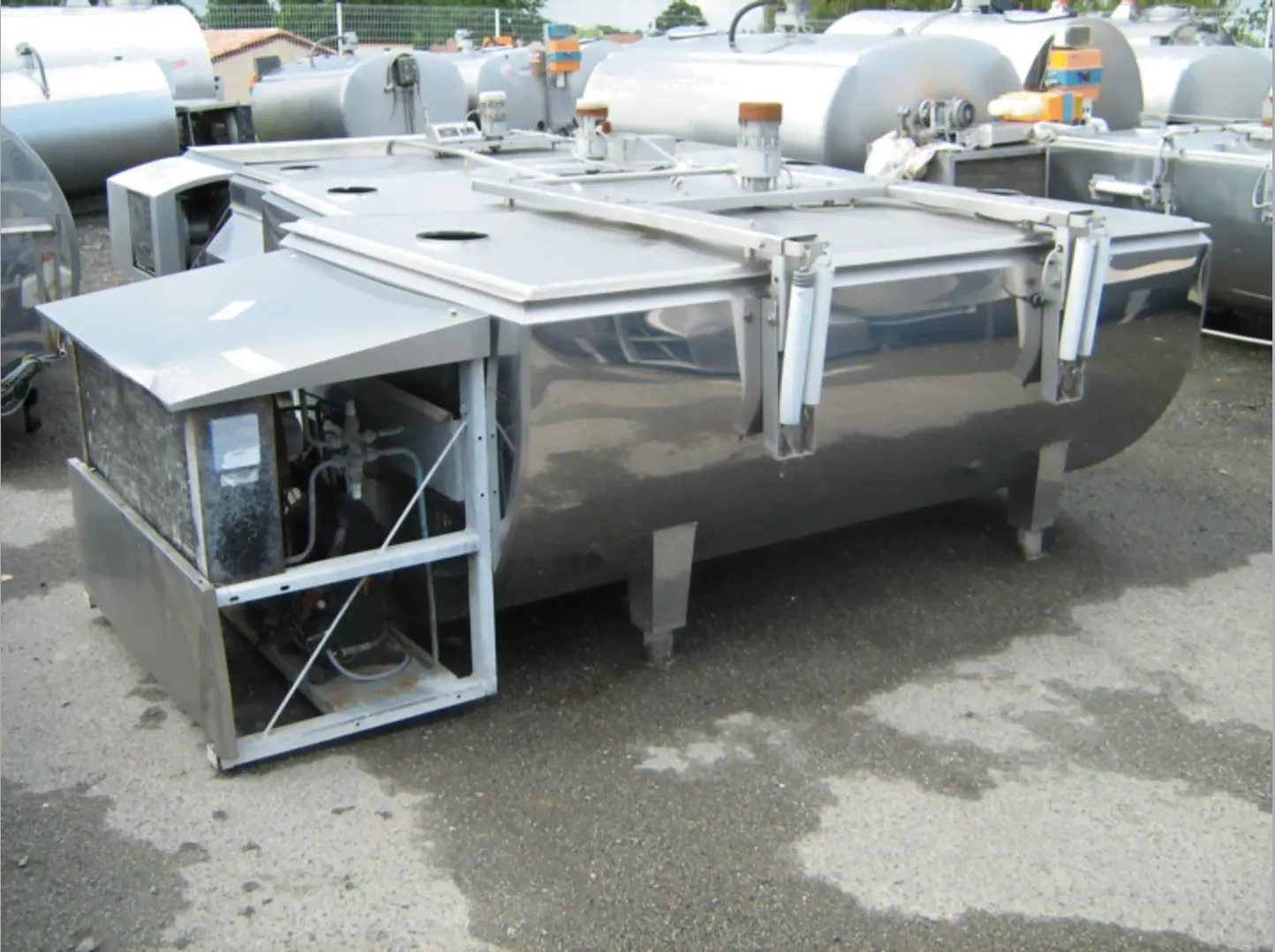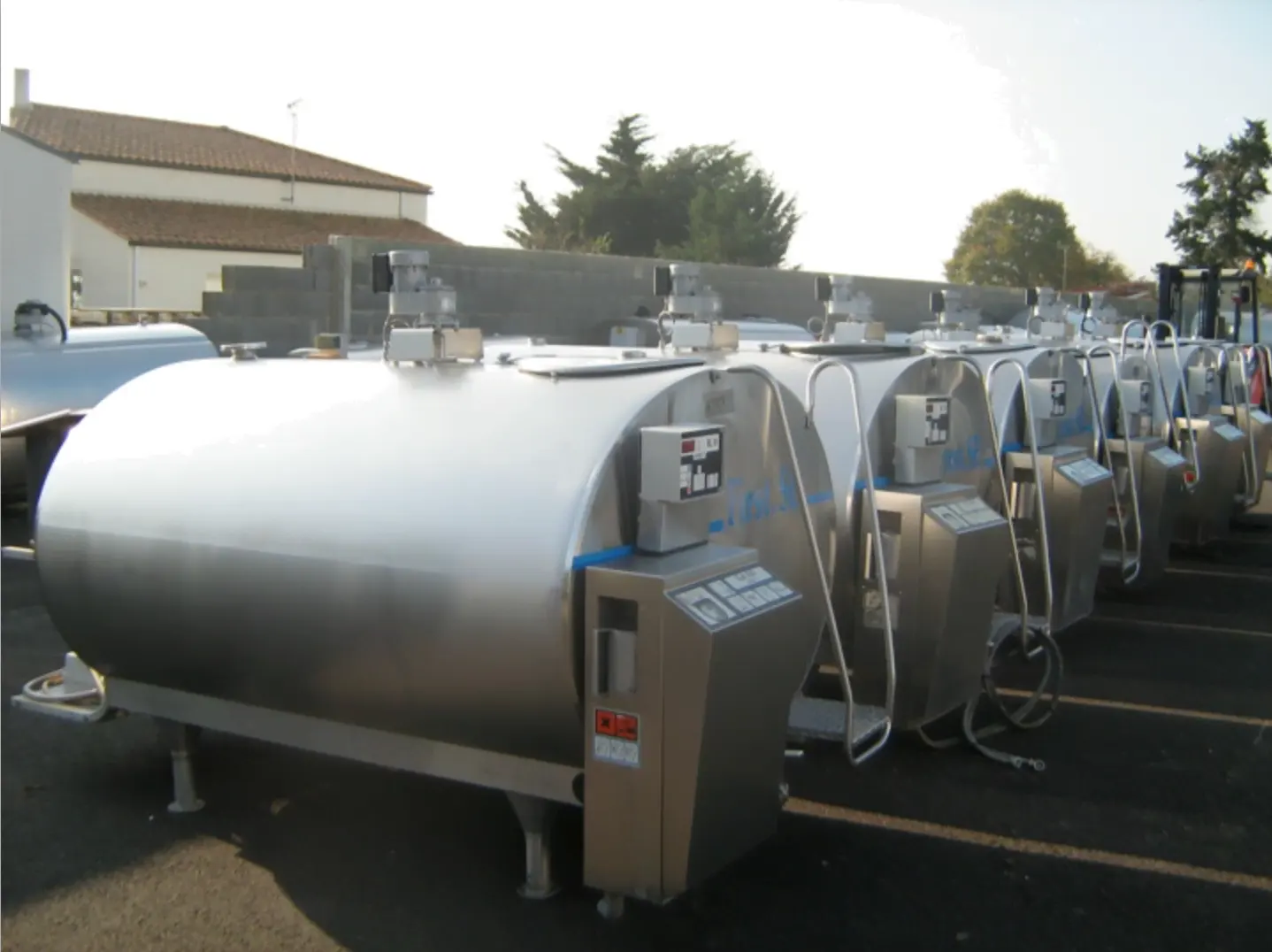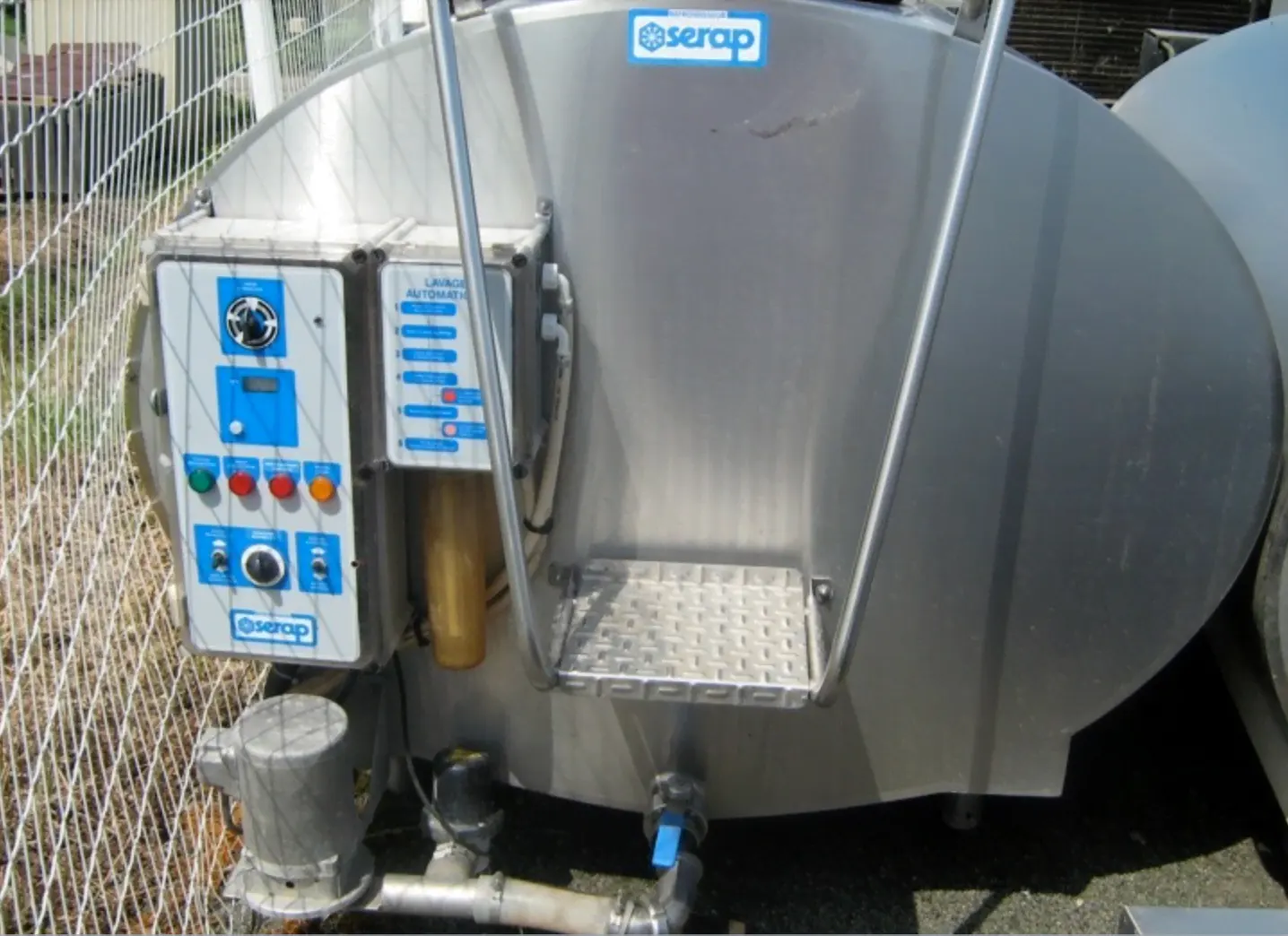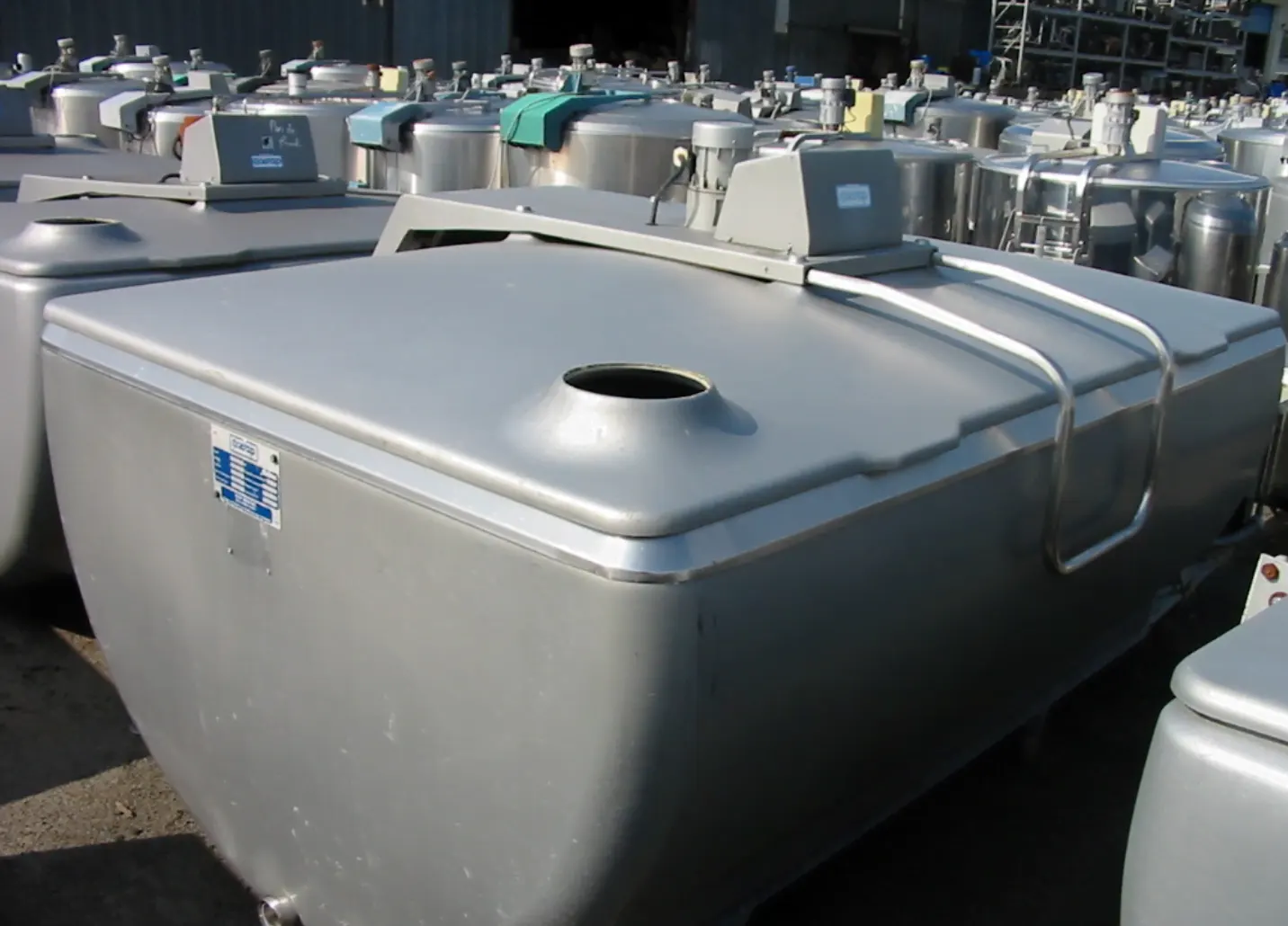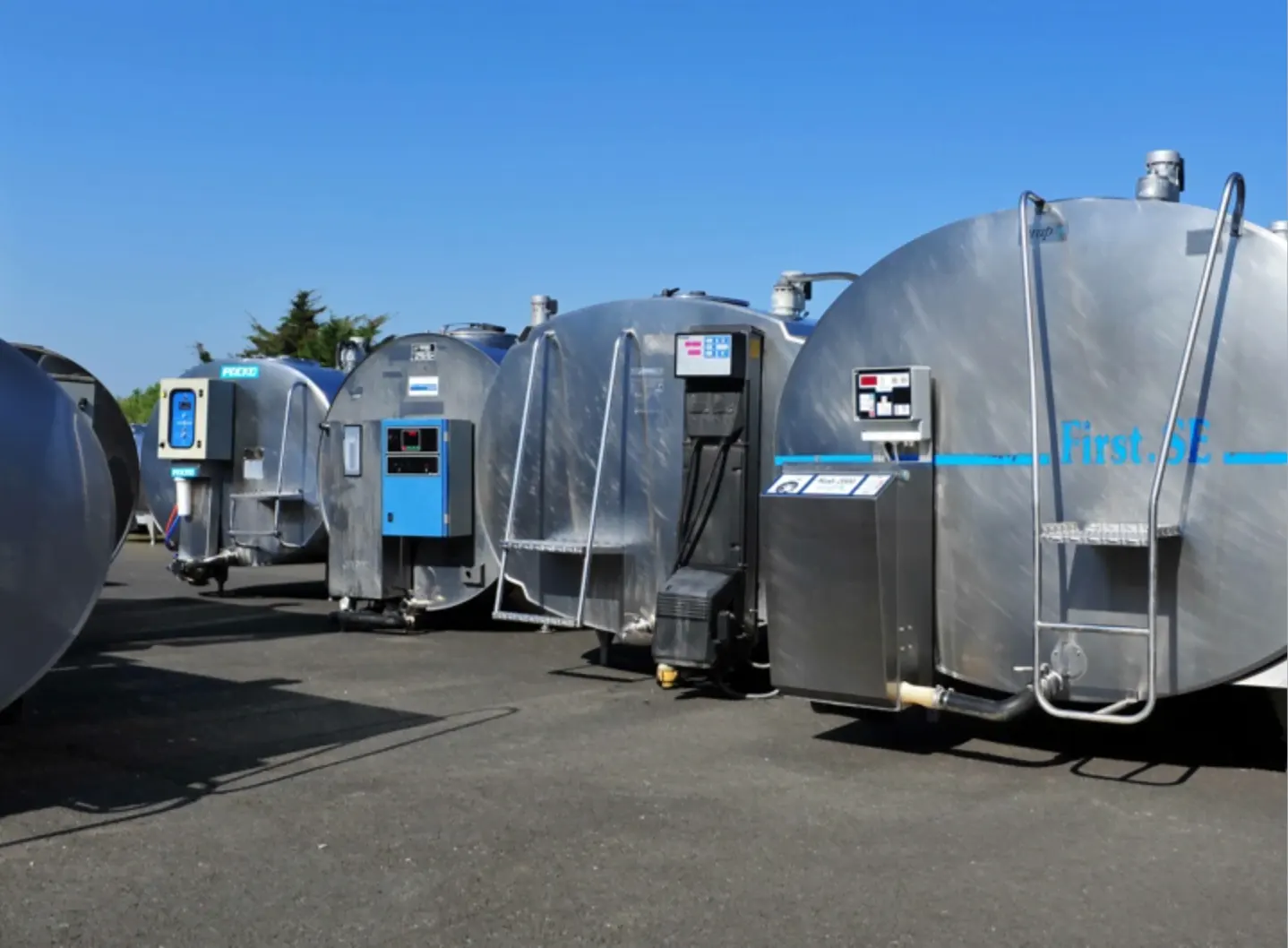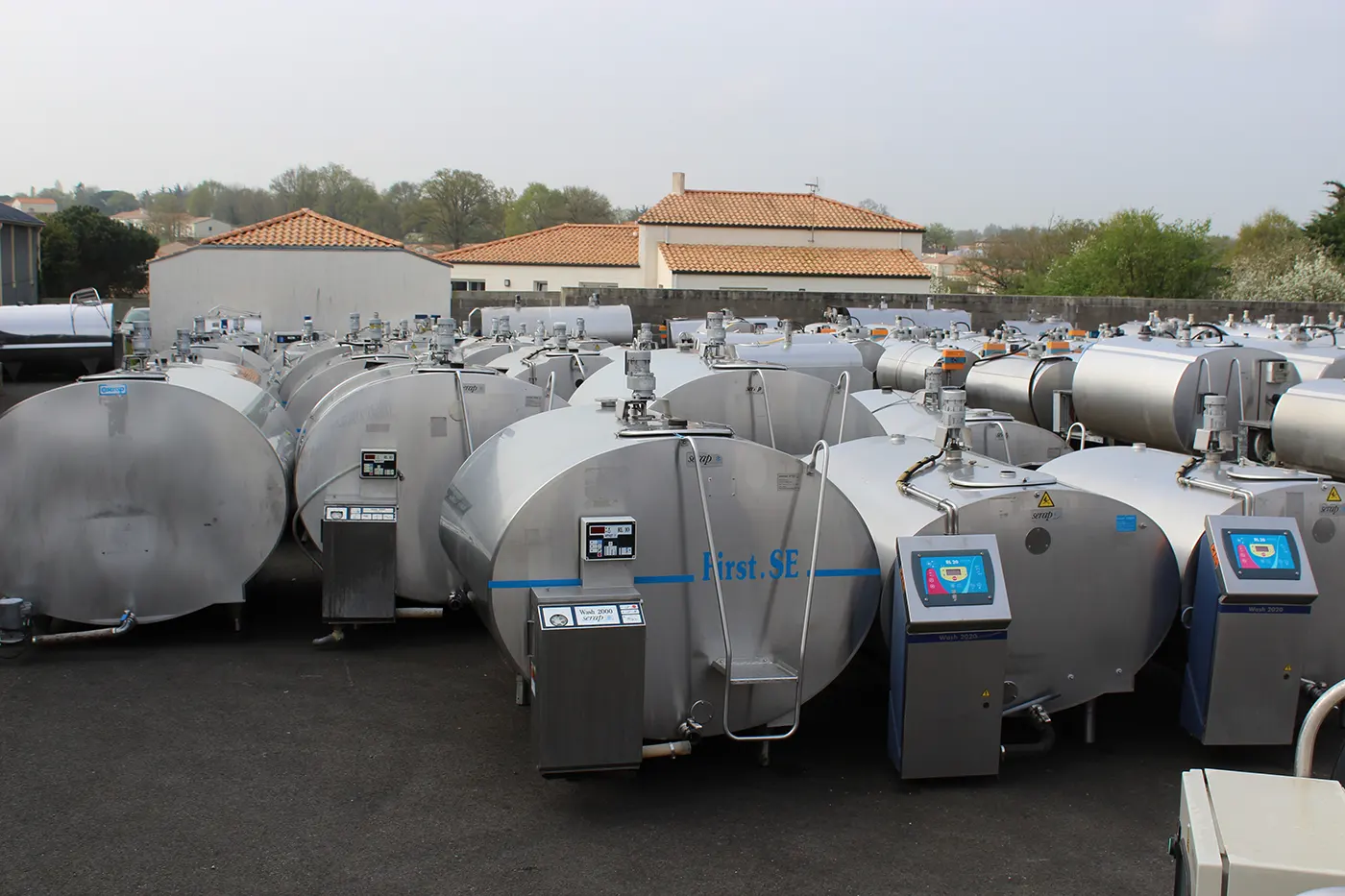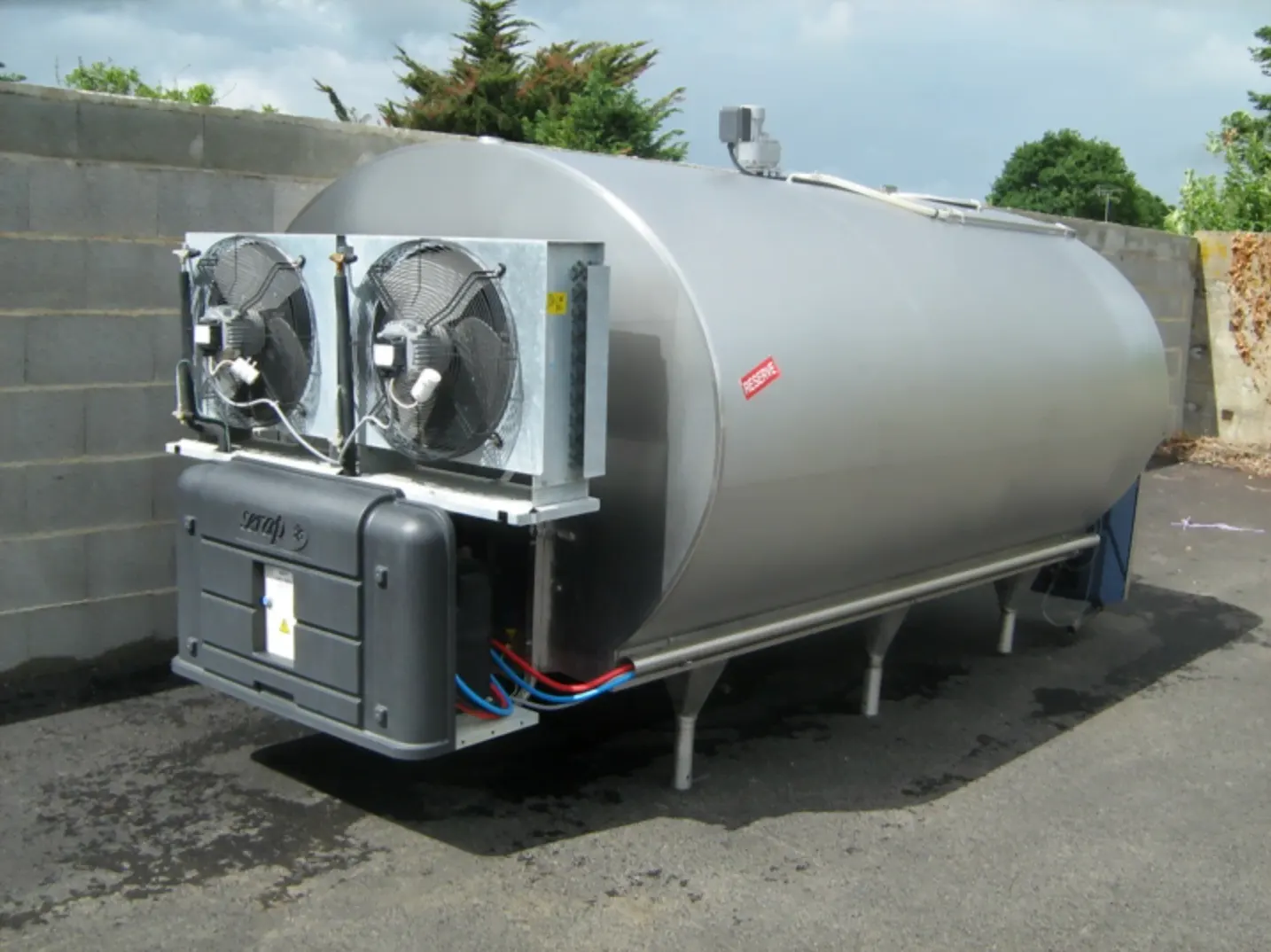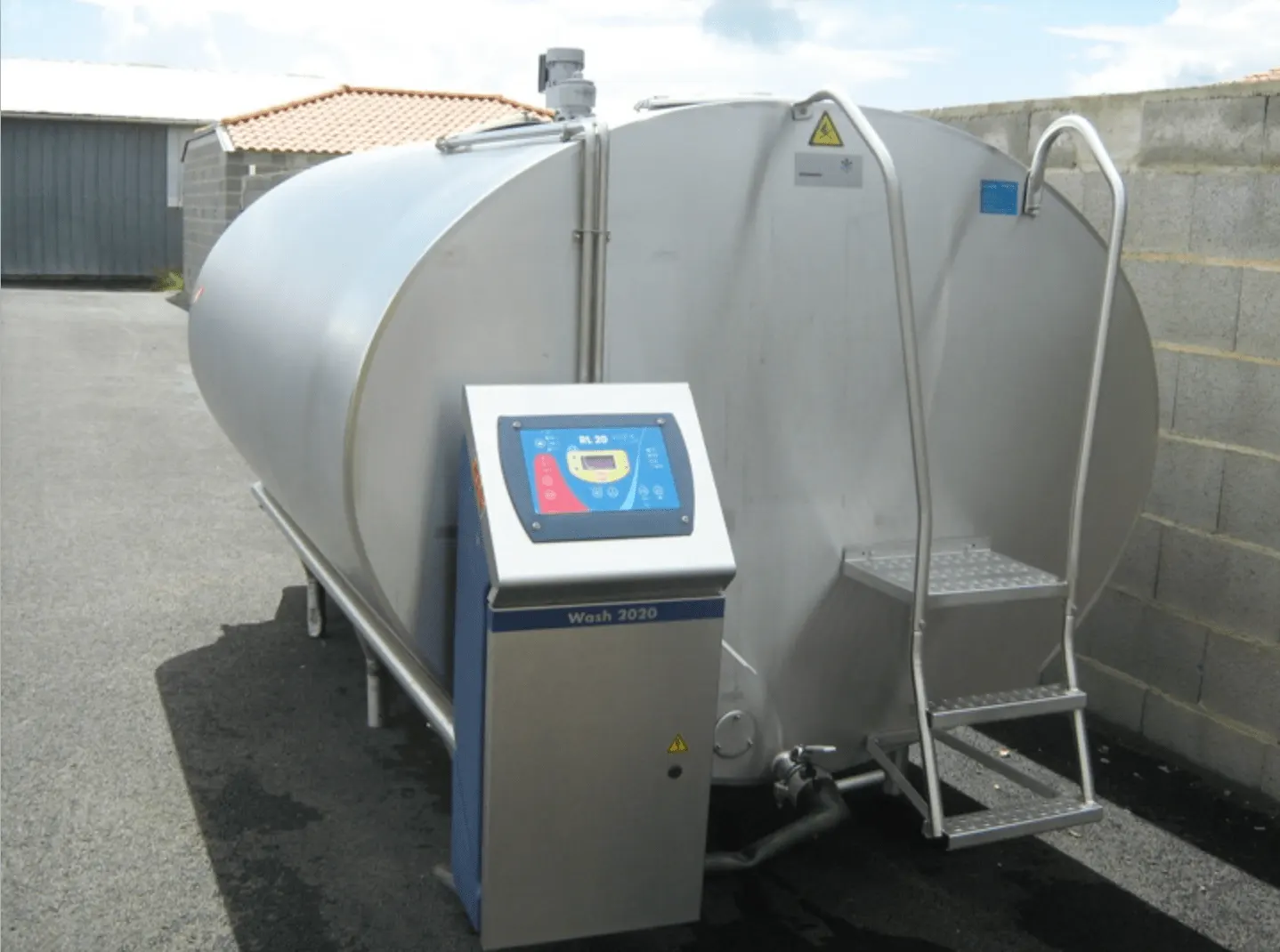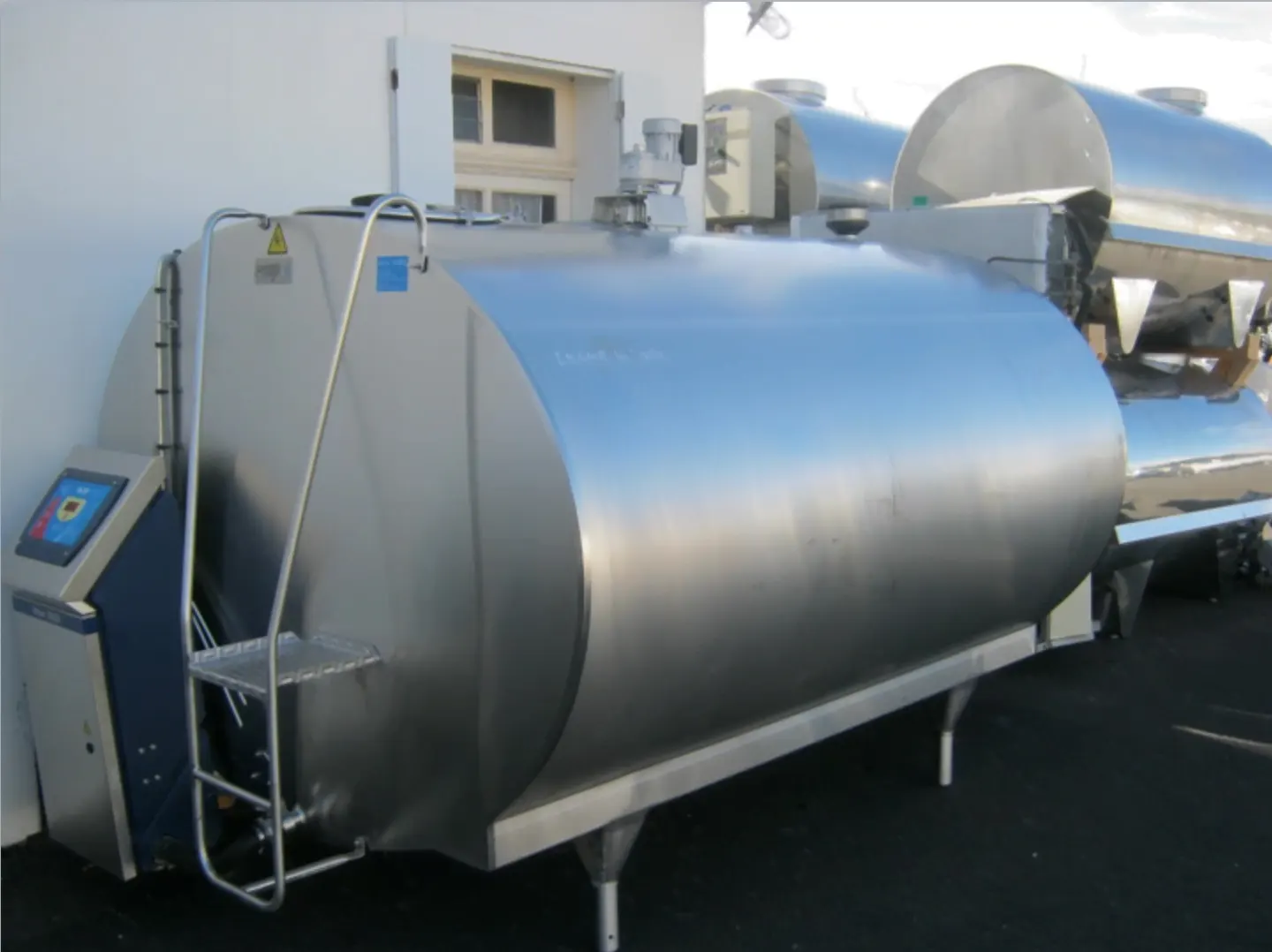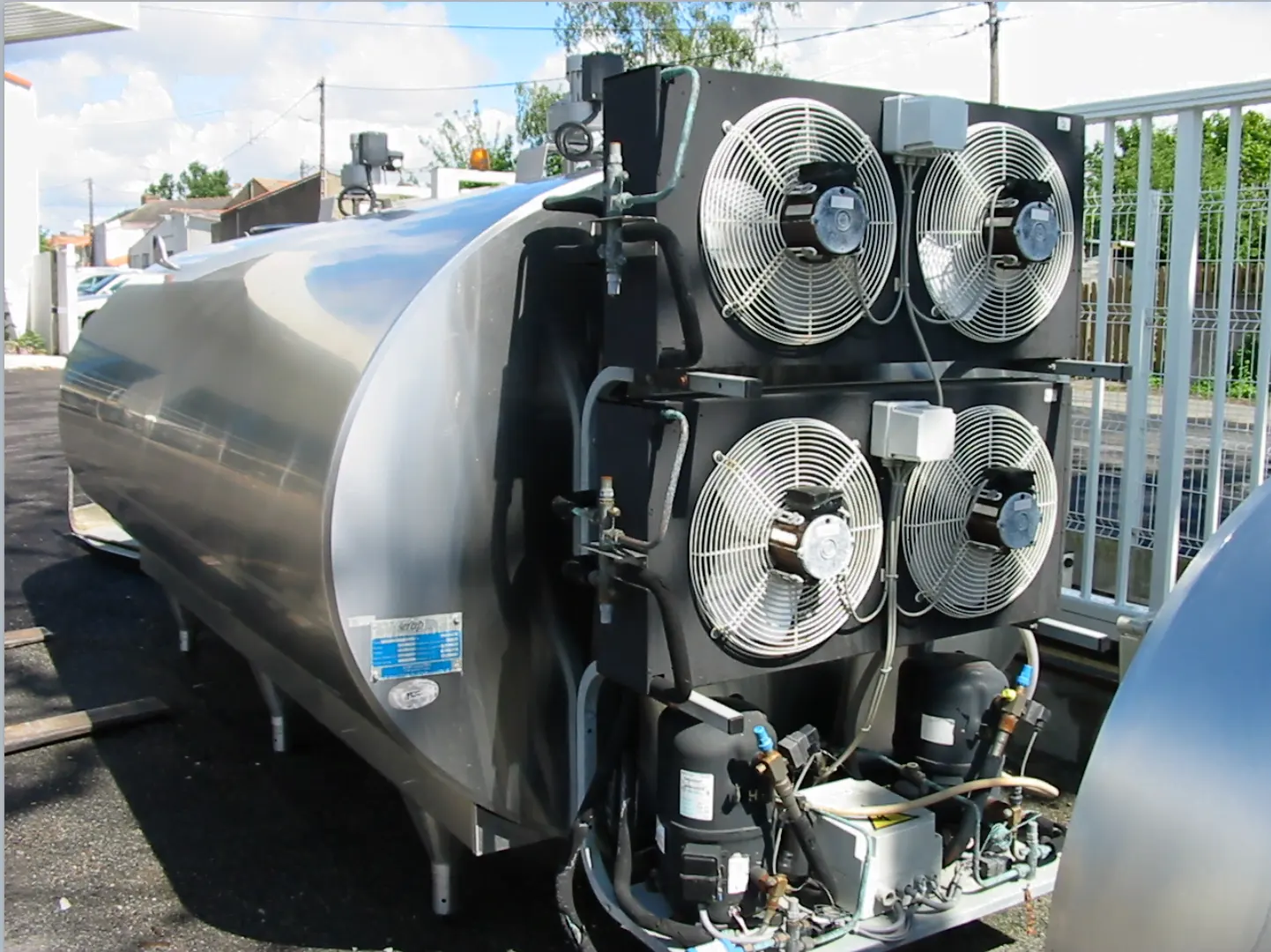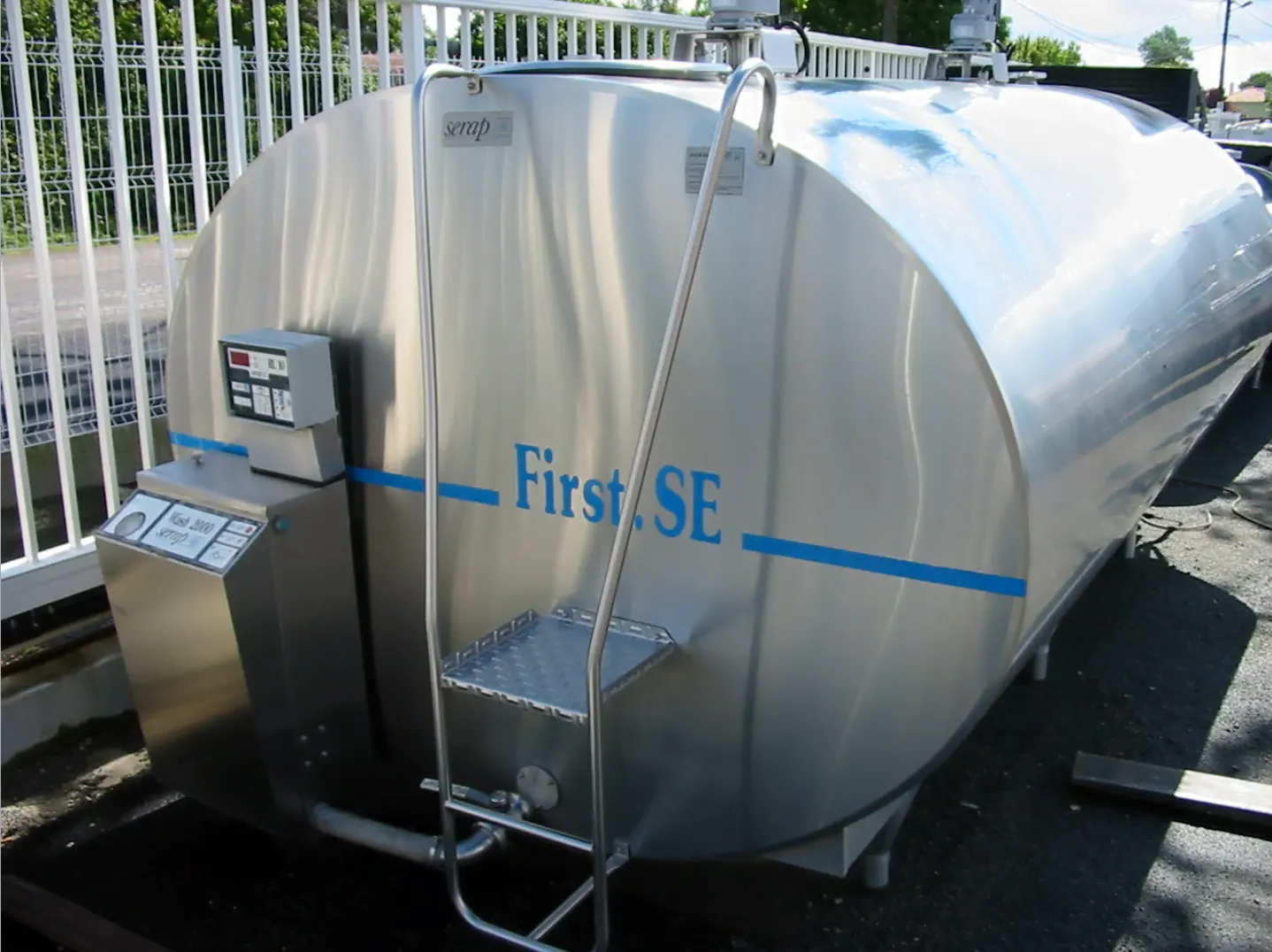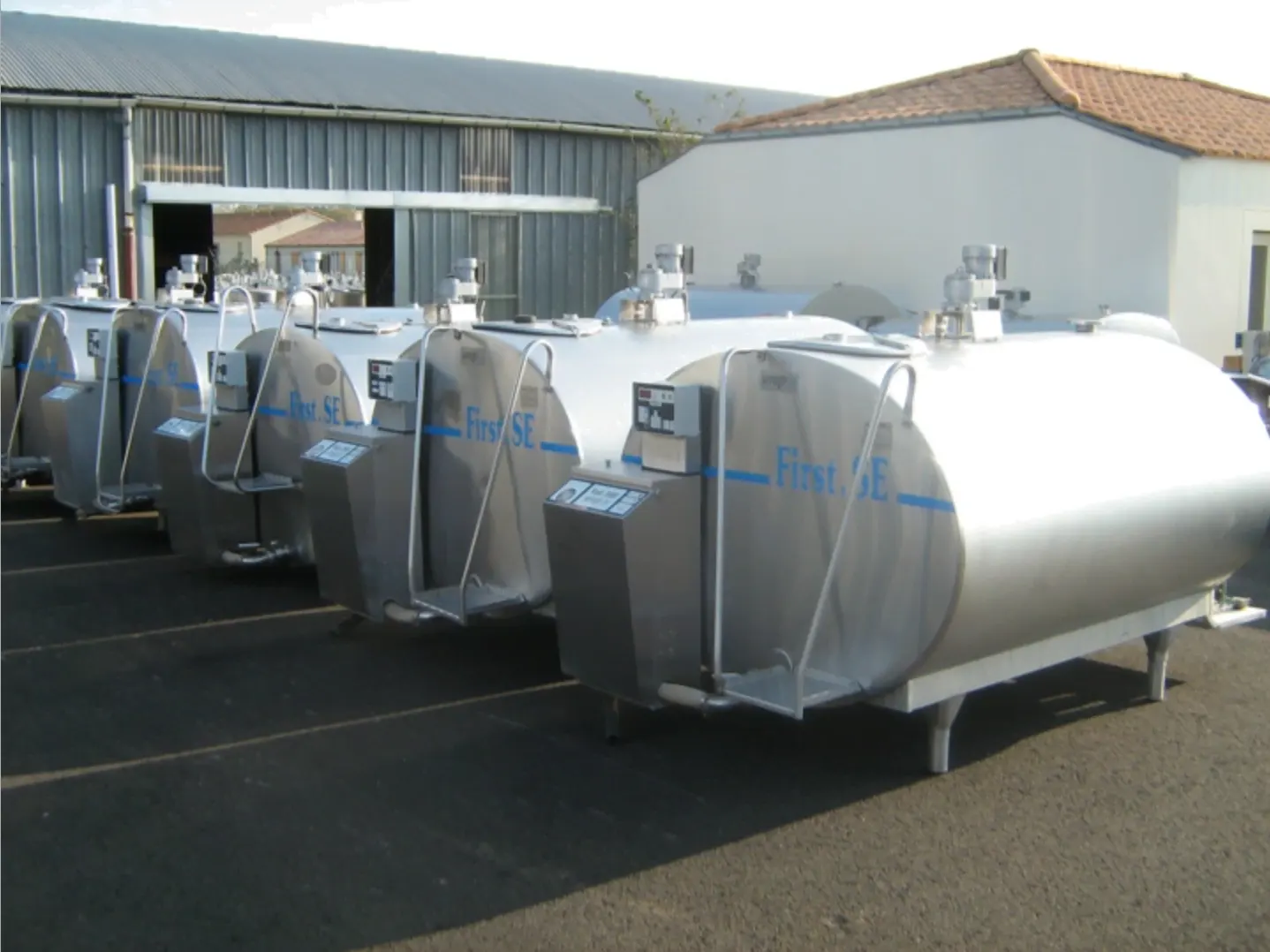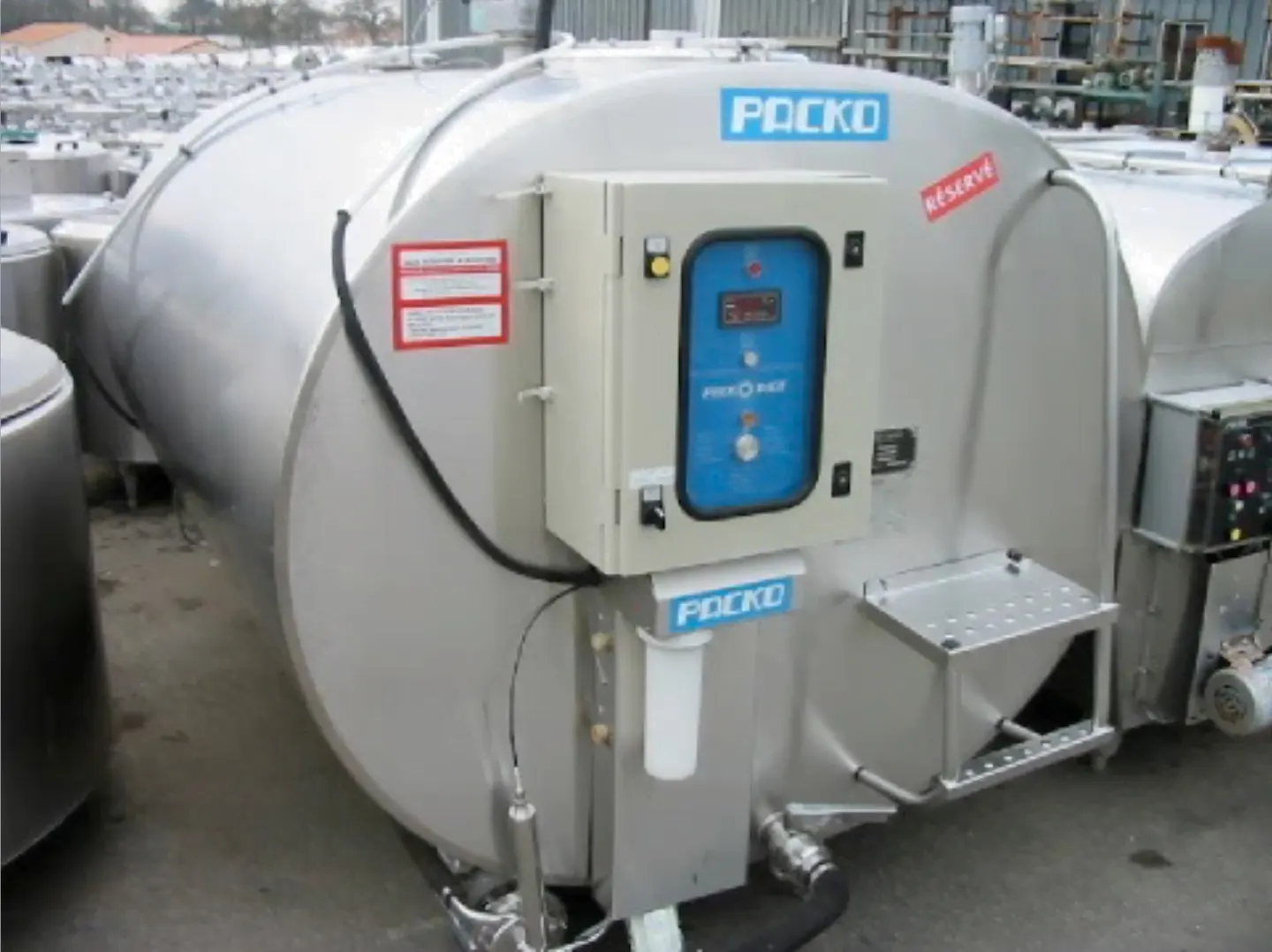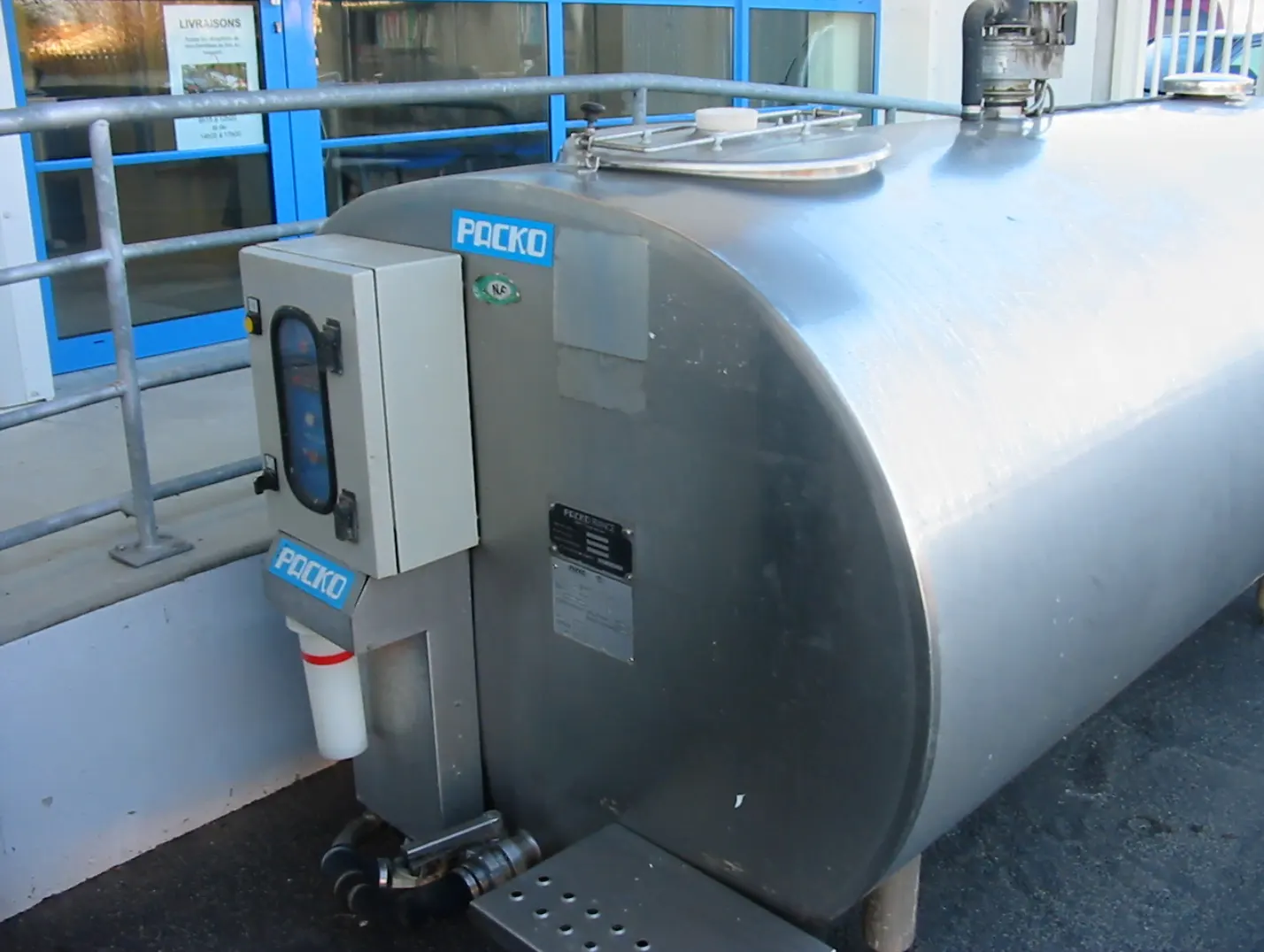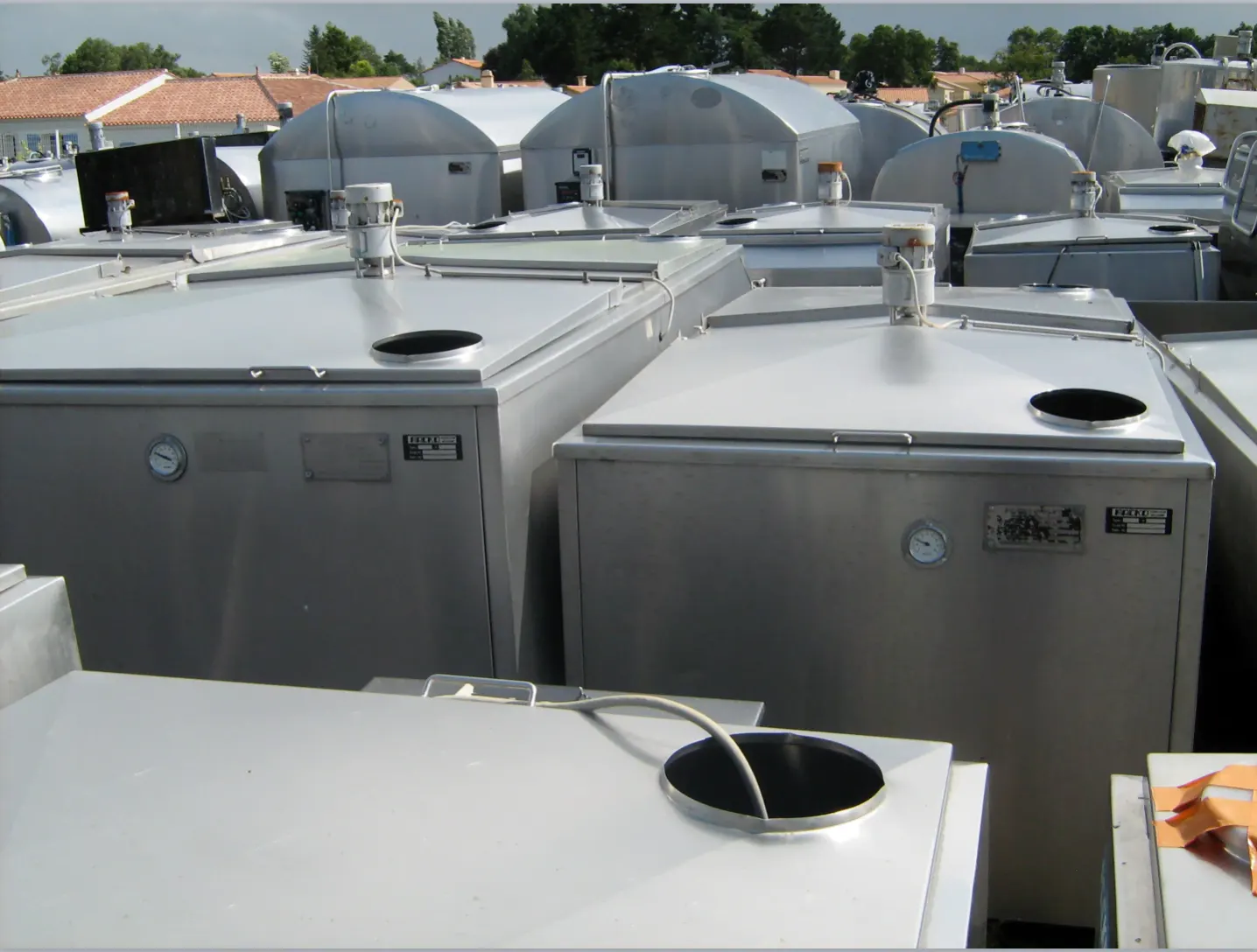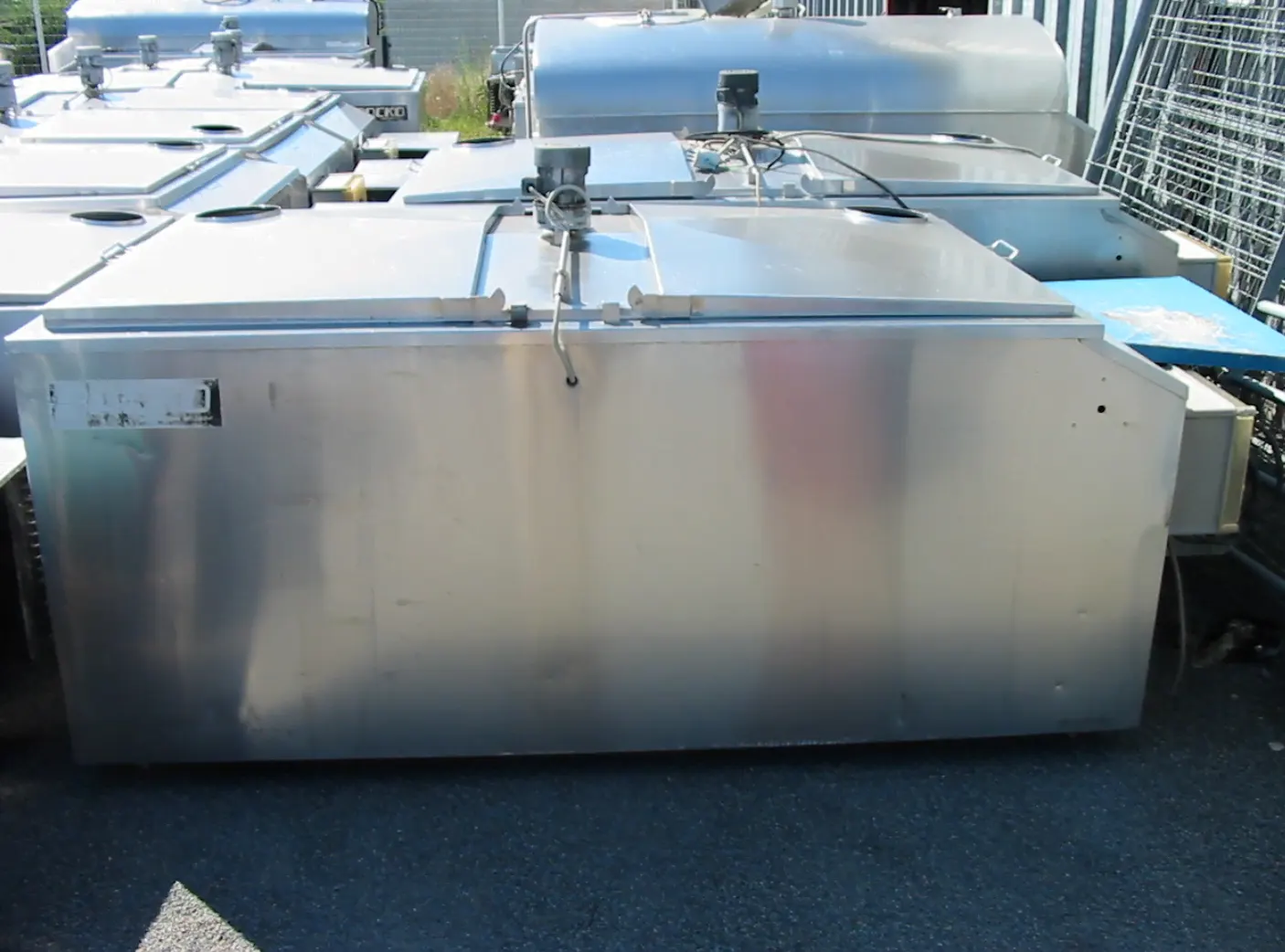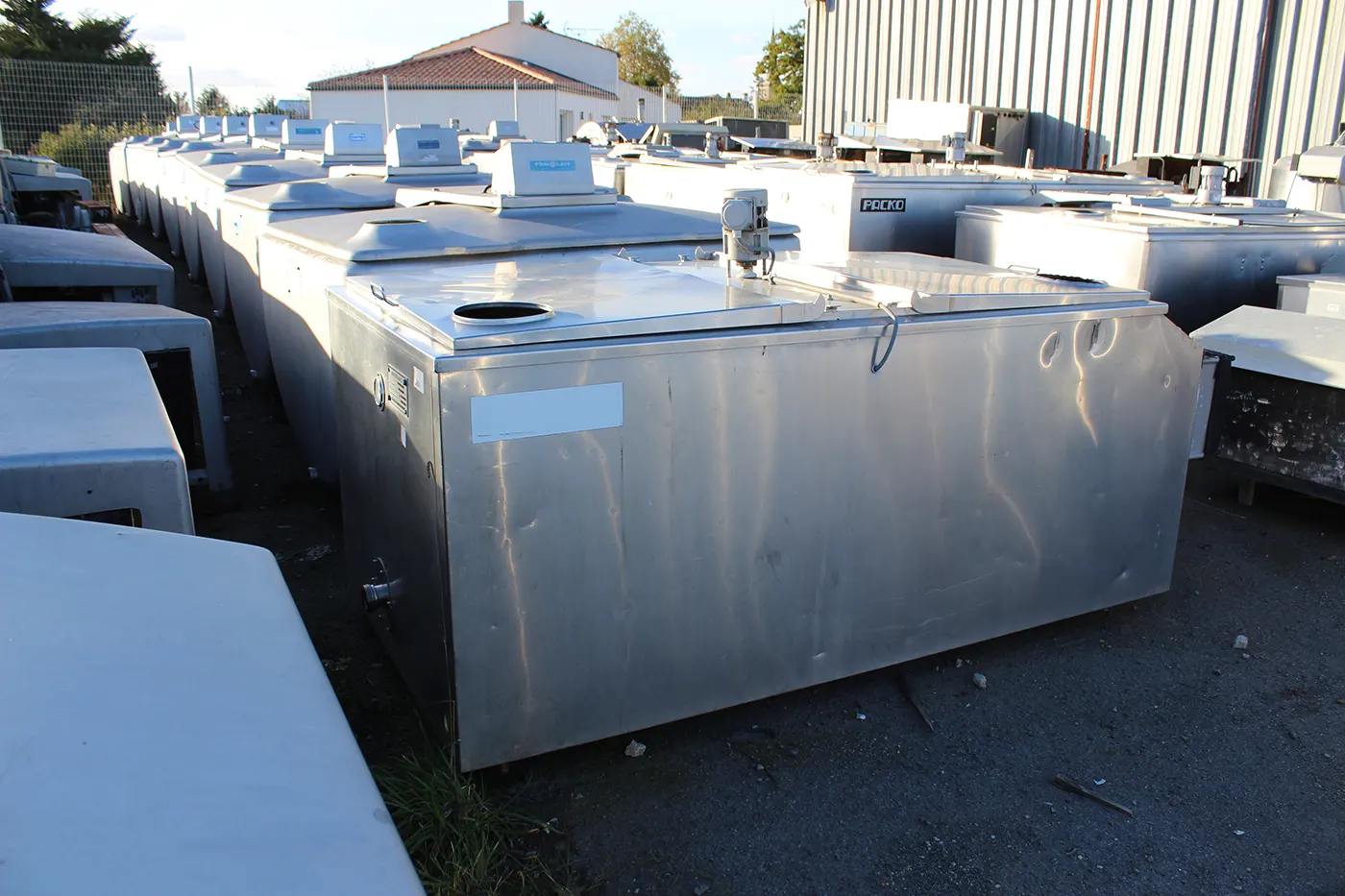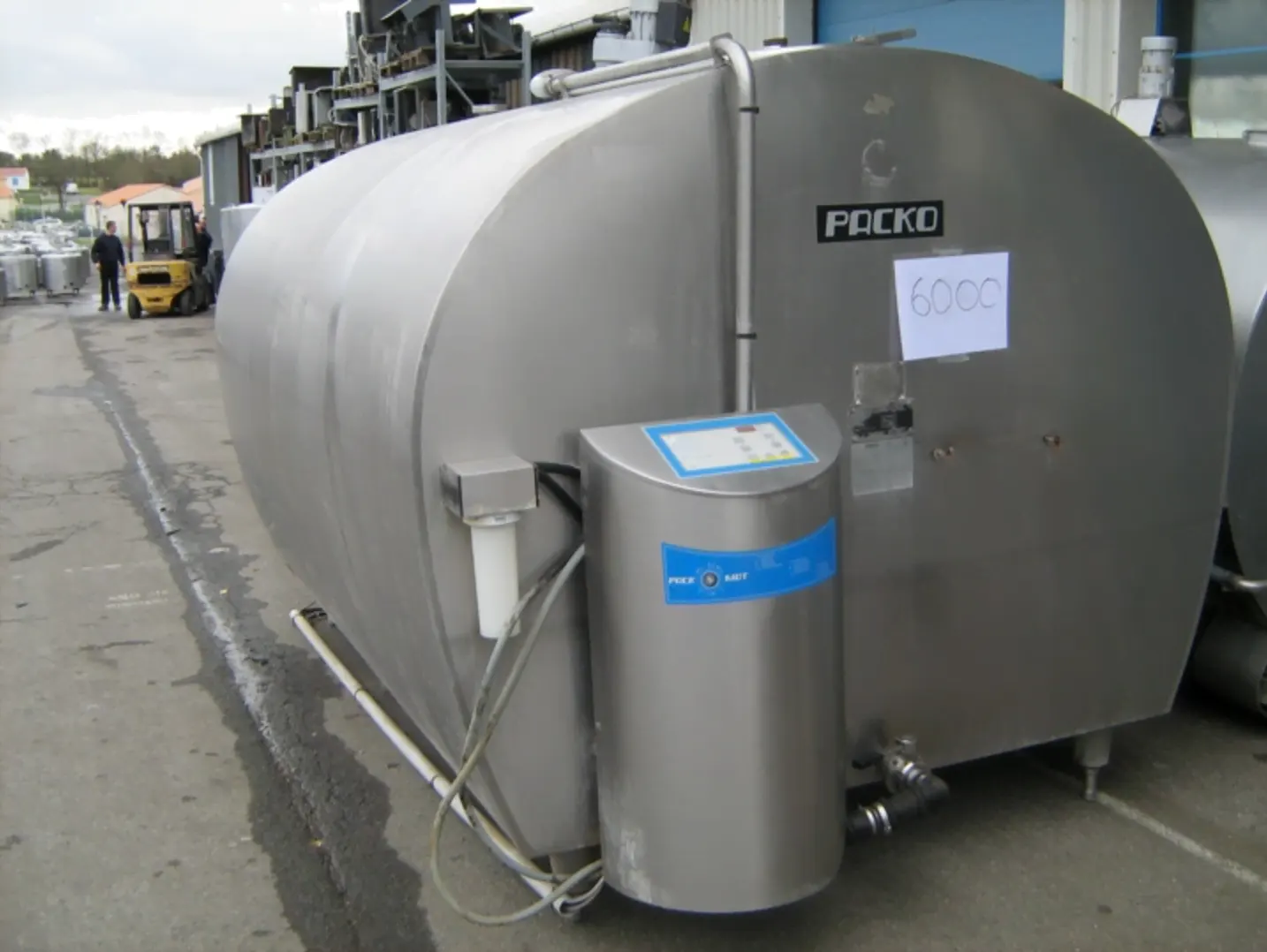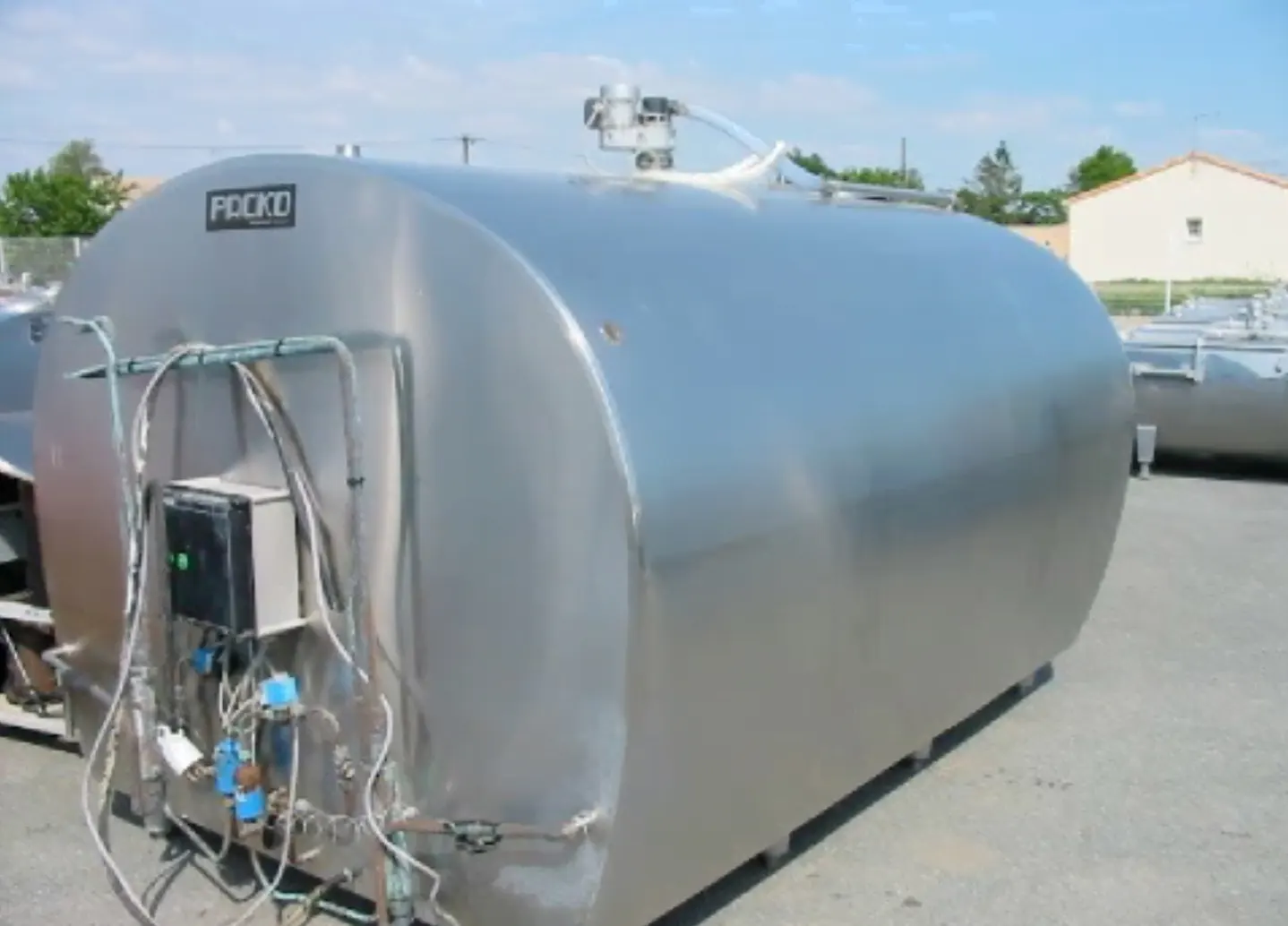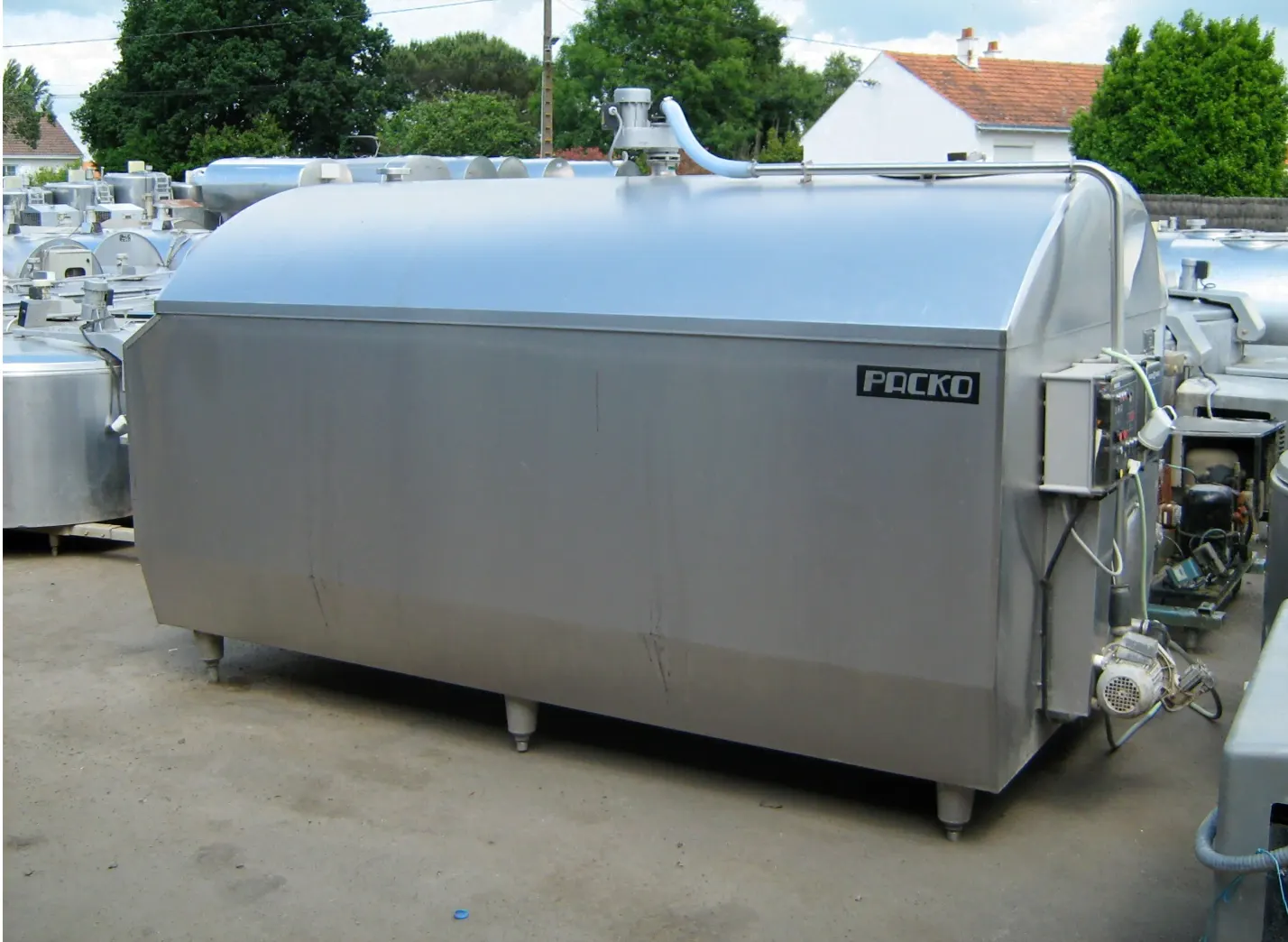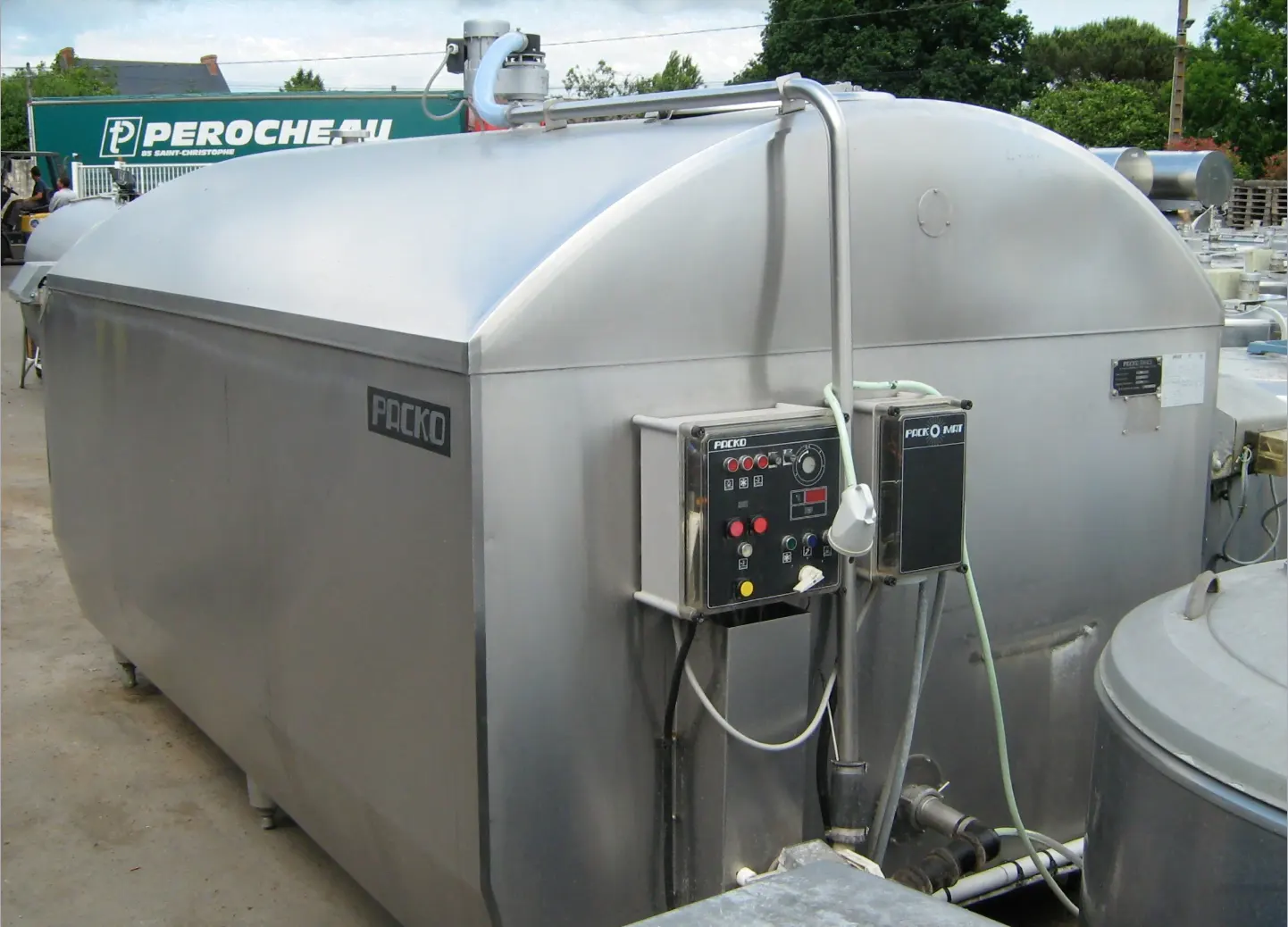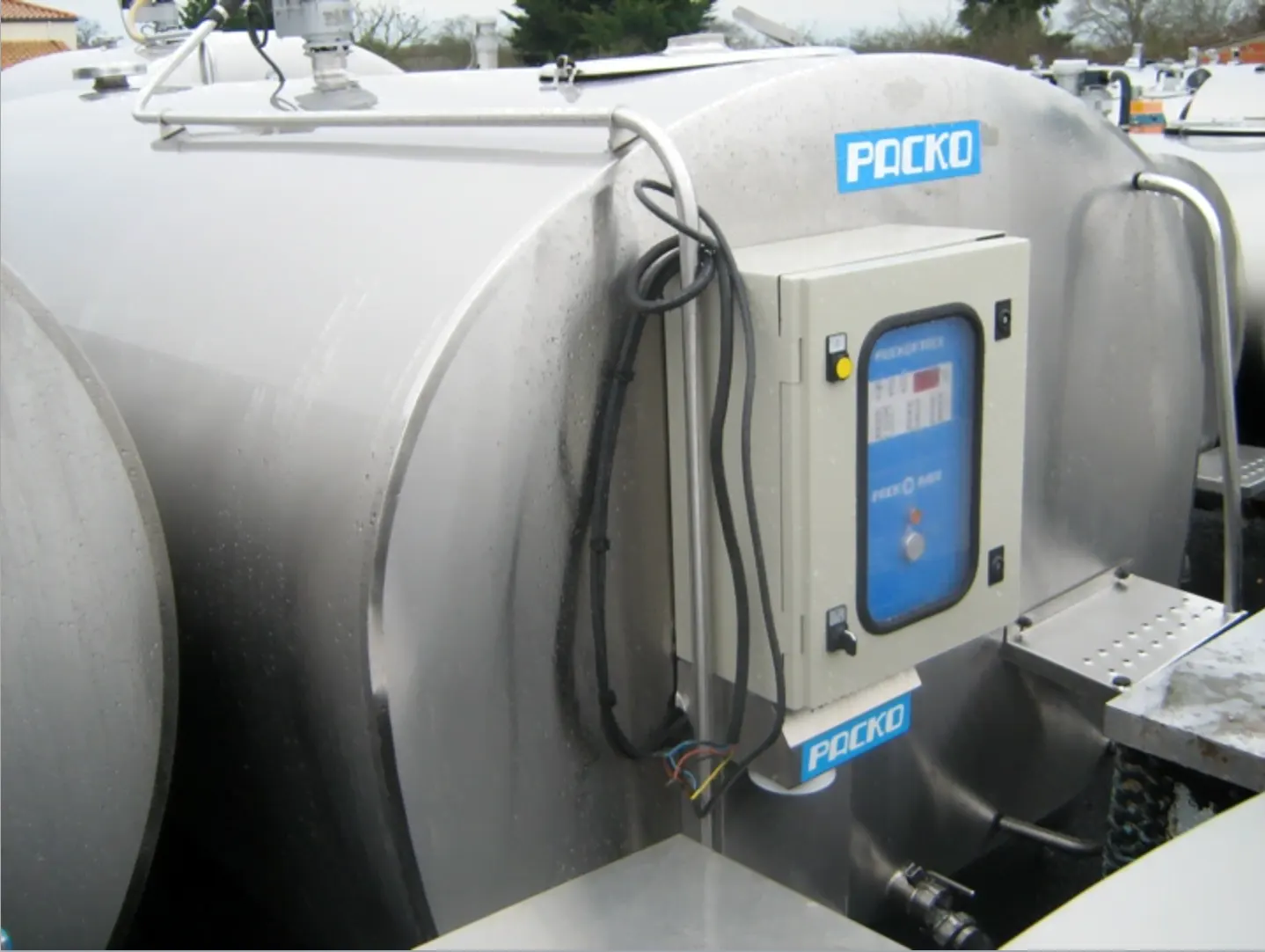Do you need a milk cooling tank?
Call us now
Used milk cooling tank
Give a new life to a 400 to 10,000 litre milk cooling tank
You are looking for a used milk cooling tank. Find our offers on agriaffaires.
Ets CHARRIAU is the leader in France for used milk cooling tanks.
After selling the first new tanks in the early 1960s, our company now specialises in the sale of used, non-renovated milk cooling tanks. The main brands are : JAPY, ALFA-LAVAL, PROMINOX, SERAP, MUELLER, PACKO, FIC, FABDEC, ELEKTROGENO…
On the export market, our customers are mainly companies active in the renovation of milk cooling tanks. We can supply them with homogeneous batches for a given brand and capacity.
With 900 milk cooling tanks (mainly between 600 and 3,500 litres) visible in our fleet, we can advise our customers on the most suitable milk cooling tank model for their particular needs. For France only, we offer individual milk cooling tanks, overhauled or not.
We welcome your offers to sell milk cooling tanks (in any condition). Please specify the condition, the model and the serial number mentioned on the identification plate of the tank.
We can also buy your tanks and offer you others at the same time (lower transport costs).
We also offer our advice for a more specific use (bakery, milk collection, improvement of wine making, storage of blood in slaughterhouses, oil, honey, liquid chocolate, shrimps, brewing beer at home, egg breakers…
The used milk cooling tank allows :
- Respect the raw material by avoiding as much as possible the triturations of the must during the thermal treatments (slow stirrer).
- Facilitate the control of operations that can be sources of wasted time and errors with unfortunate consequences.
- We sell many milk cooling tanks (from 200 to 5000 litres) as heat treatment tanks for use as wine coolers and heat exchangers.
The CHARRIAU tubular pre-cooler can also be used to control wine fermentation temperatures.
We have several brands of milk cooling tanks of different capacities in our fleet.


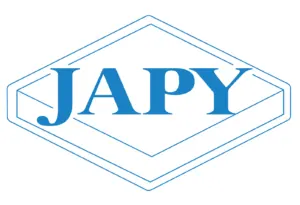
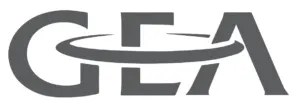
Needfor a milk cooling tank
The dairy must allow for the collection and storage of milk in the milk tank in optimal hygiene and safety conditions
A suitable floor
At least made of concrete: non-slip and washable.
Slightly sloped to avoid stagnation of water under the tank, with a drain to a collector.
The owner of the milk cooling tank must have the tightness of the cooling circuit of his milk cooling tank checked by an approved body when it is put into service and then annually.
To ensure that the milk cooling tank functions properly, its installation should be integrated into the design of the building.
Consultation with the dairy’s refrigeration department or the supplier of the milk cooling tank is essential before finalising the project in order to properly size the milk cooling tank and position the electrical, drinking water and milk supply lines, drains and ventilation.
Daily maintenance
Washing
After collection, once the washing is completed, check the cleanliness of the tank by eye and nose. Also keep the outside of the milk tank clean, especially the milk tank outlet valve (inside and outside). Check any warning lights on the milk tank console.
In case of problems
To be checked
- Washing parameters (including water temperature and concentration of products used)
- That the water inlet filters are not clogged.
Measuring the smooth operation of the agitator
Necessary to homogenise the milk from the various milkings and ensure uniform cooling, the agitator normally runs continuously during the cooling period and then during storage for 2 minutes every 13 minutes. You can check the operation by standing near the milk tank for a quarter of an hour and checking that these time intervals are observed. A problem with the agitation can be suspected in particular in the event of a sudden and unexplained variation in the fat content of the milk. Translated with www.DeepL.com/Translator (free version)
Never change the stirring speed
Cooling
Immediately after milking, the milk must be brought to a temperature of between 0 and 6°C within a maximum of 3 hours, regardless of the volume to be cooled, except in the case of food business operators meeting the requirements of Regulation 853/2004.
The temperature is usually displayed on the milk cooling tank. If in doubt about the operation of the thermostat, do not hesitate to check it manually with a thermometer.
Check the operation of the warning lights on the milk tank console.
Keep the condenser clean and clear.
As the lungs of the cooling system, it must be kept clear and cleaned regularly to ensure good heat exchange with the outside.
A dirty condenser increases the cooling time of the milk and the electricity bill.
Dusting can be done with a dry nylon brush. (Do not use metal brushes as they may damage the fins and do not use a high pressure cleaner as it may crush them).
Pay particular attention to the cleanliness of condensers during hot weather.
Take out the dipstick after washing
The gauge must be clean, dry and on the outside of the milk tank on the counter provided.
Keep the gauging chart in a visible, well positioned and well maintained place.
IN THE EVENT OF A THUNDERSTORM
- If you unplug your milk tank, do not forget to turn it back on after the storm.
- Check with your dairy to find out what to do in the event of a storm.
- Never work on the electrical circuit alone (call in the chosen service provider or the dairy)
To control the electricity consumption of the milk cooling tank
There are other ways to control the electricity consumption of the milk cooling tank:
- Install part of the milk cooling tank (the rear part with the cooling unit) outside under a well-ventilated closed shelter.
- Install the cooling unit outside (milk cooling tank with separate cooling unit)
- Install a milk pre-cooler, which reduces by about 50% the power consumption of the milk tank.
Source : INSTITUT DE L’ÉLEVAGE – LE STOCKAGE ET LA CONSERVATION DU LAIT EN EXPLOITATION

